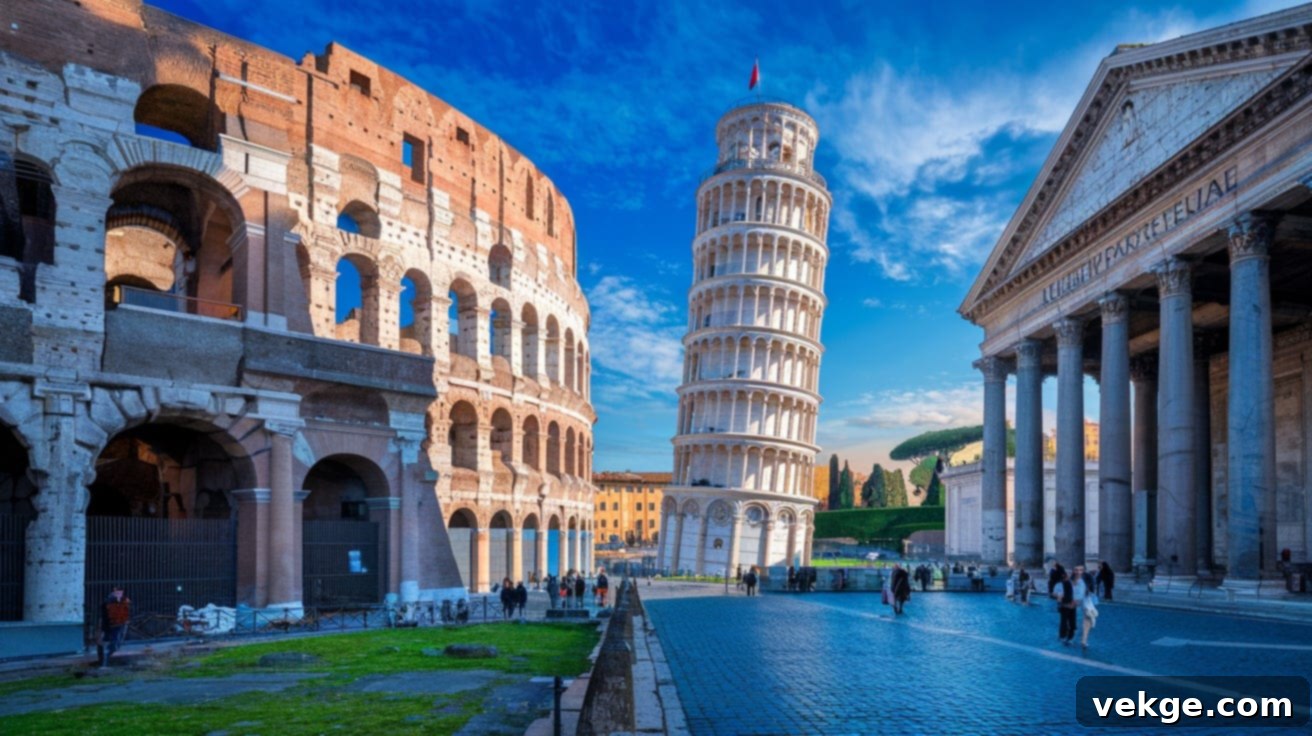Discover Italy’s Iconic Landmarks: A Comprehensive Guide to Must-See Buildings and Historical Sites
Italy, a land steeped in millennia of history, art, and breathtaking natural beauty, continuously captivates travelers worldwide. Its landscape is richly adorned with iconic landmarks and architectural marvels that narrate stories spanning ancient empires, glorious renaissances, and enduring traditions. Have you ever gazed upon a structure that has not merely withstood the test of time but continues to inspire awe with its grandeur and profound historical significance?
Embarking on a journey through Italy, with its seemingly endless array of world-renowned attractions, can often feel exhilarating yet daunting. With so many famous buildings, ancient ruins, and artistic treasures awaiting discovery, and often a limited timeframe, prioritizing your must-see destinations becomes an essential part of planning. This comprehensive guide is meticulously crafted to simplify your itinerary, spotlighting Italy’s most famous buildings and indispensable landmarks that truly embody the nation’s unparalleled cultural heritage.
From the colossal ancient amphitheater of Rome – the magnificent Colosseum – to the uniquely tilted marvel of the Leaning Tower of Pisa, and the artistic wonders housed within Florence’s venerable institutions, we have curated a selection of unparalleled destinations. Each entry in this guide will delve into what makes these places profoundly special, offering engaging insights into their rich history and enduring importance. Beyond their historical narratives, we also provide practical tips on the best times to visit for an optimal experience, along with their general visiting hours, ensuring you can plan your explorations with confidence and ease.
Prepare to embark on a virtual tour that will equip you with the knowledge to discover Italy’s profound history, artistic achievements, and unique regional charm. Our goal is to help you navigate these popular sites with minimal stress and maximum enjoyment, transforming your travel dreams into a perfectly planned reality. Get ready to experience the magic of Italy’s architectural treasures and ancient wonders, one iconic landmark at a time.
Must-Visit Famous Buildings in Italy
1. Colosseum (Rome)
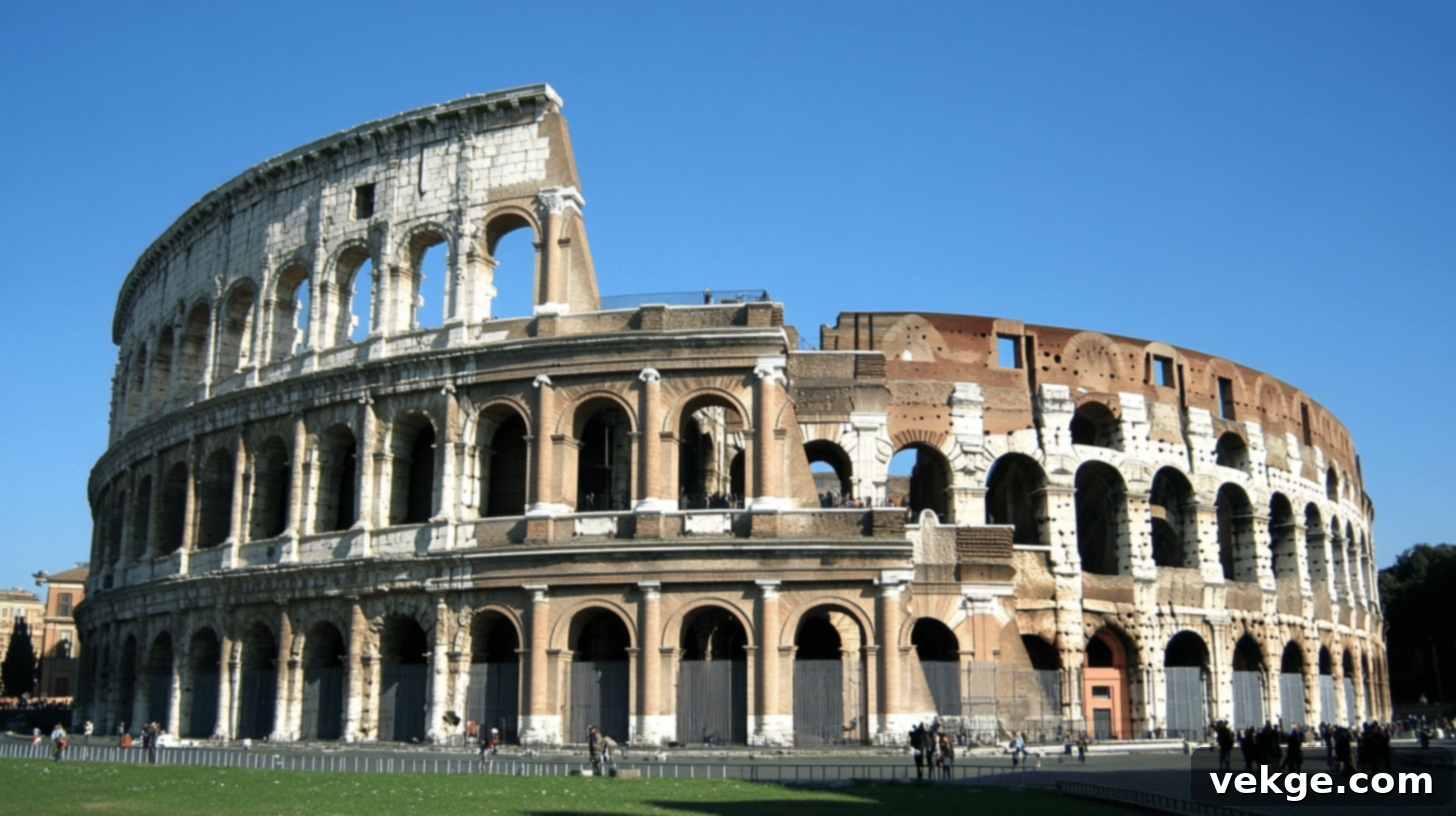
History and Importance: The Colosseum, originally known as the Flavian Amphitheatre, stands as an enduring symbol of Imperial Rome’s architectural prowess and engineering genius. Constructed between 70 and 80 AD under the emperors Vespasian and Titus, this monumental structure was the largest amphitheater ever built, designed to host spectacular public events. These included thrilling gladiator contests, dramatic animal hunts, mock sea battles, and theatrical performances, captivating audiences with their grandeur. Capable of seating an astonishing 50,000 to 80,000 spectators, the Colosseum represented the Roman Empire’s power and cultural influence. Despite centuries of damage from earthquakes and stone theft, its awe-inspiring ruins continue to dominate the Roman skyline, remaining a UNESCO World Heritage site and an essential stop for anyone wishing to grasp the scale and drama of Roman civilization.
Best Time to Visit: For milder weather and fewer crowds, plan your visit during the shoulder seasons of spring (April-May) or early fall (September-October). Arriving right at opening time in the early morning or later in the afternoon helps avoid peak rush. Always pre-book tickets online to skip long queues.
Visiting Hours: Typically open daily from 8:30 AM to 7:00 PM (closing earlier in winter). It is usually closed on Christmas Day and New Year’s Day. Last entry is approximately one hour before closing. Always check the official website for current schedules.
2. Leaning Tower of Pisa (Pisa)
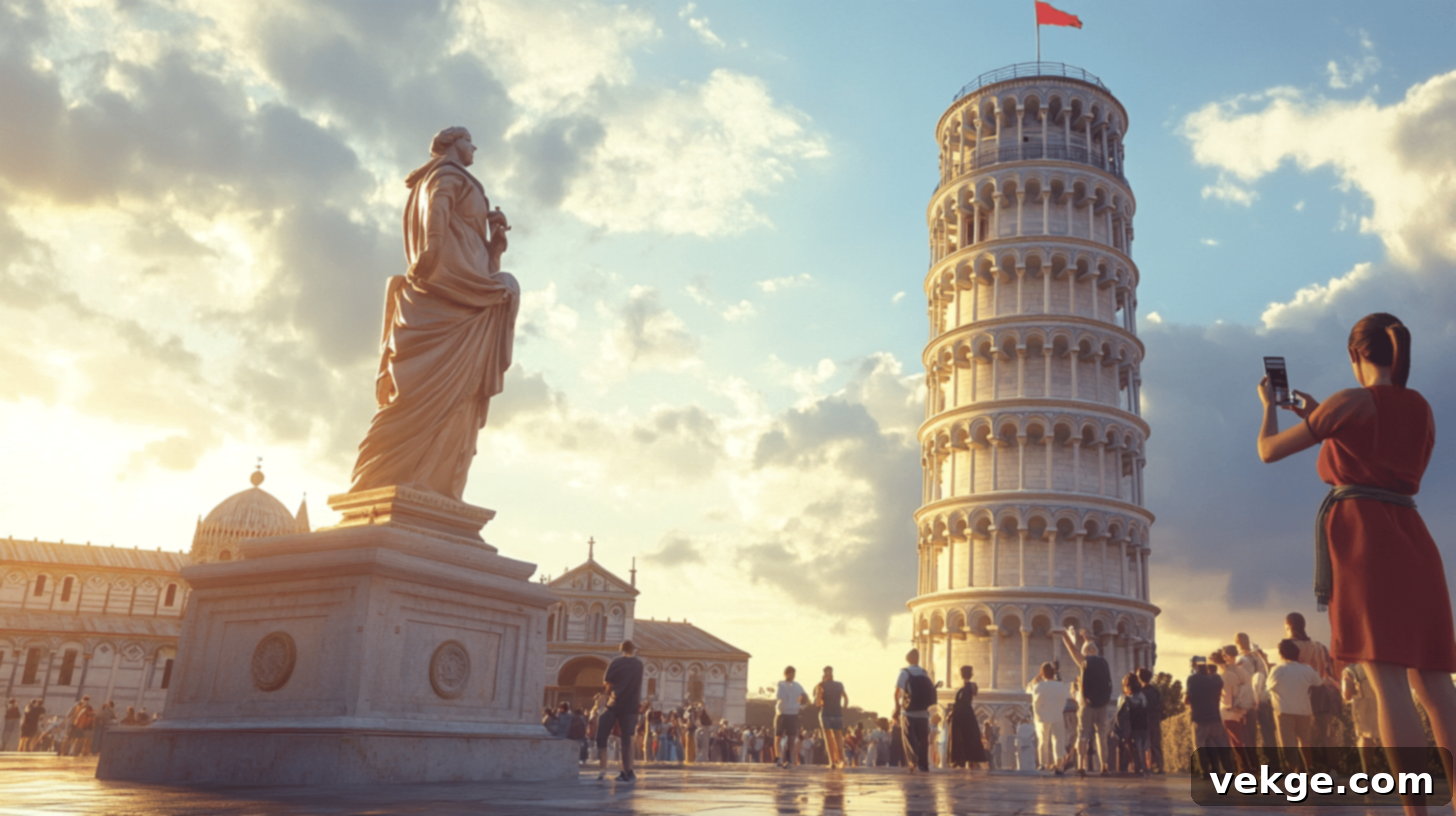
History and Importance: The Leaning Tower of Pisa, a freestanding bell tower for the Pisa Cathedral, is globally renowned for its unmistakable tilt. Construction began in 1173 but paused due to the soft, unstable subsoil, which caused the tower to lean. Despite engineering challenges and multiple attempts to correct its angle over centuries, the lean continued, ironically transforming it into one of Italy’s most famous landmarks. Completed in the 14th century, extensive restoration work in recent decades has stabilized the structure, preventing further tilting and ensuring its preservation for future generations to admire. It stands as a testament to medieval Italian architecture and an enduring symbol of human perseverance.
Best Time to Visit: Late spring (May-June) to early fall (September) offers pleasant weather for exploring the Piazza dei Miracoli and ascending the tower. Visit early in the morning or late afternoon to avoid the largest crowds and the midday heat.
Visiting Hours: Generally open daily from 9:00 AM to 8:00 PM, with extended hours during peak summer season. Last entry is typically 30 minutes before closing. Booking tickets in advance is highly recommended.
3. St. Peter’s Basilica (Vatican City)
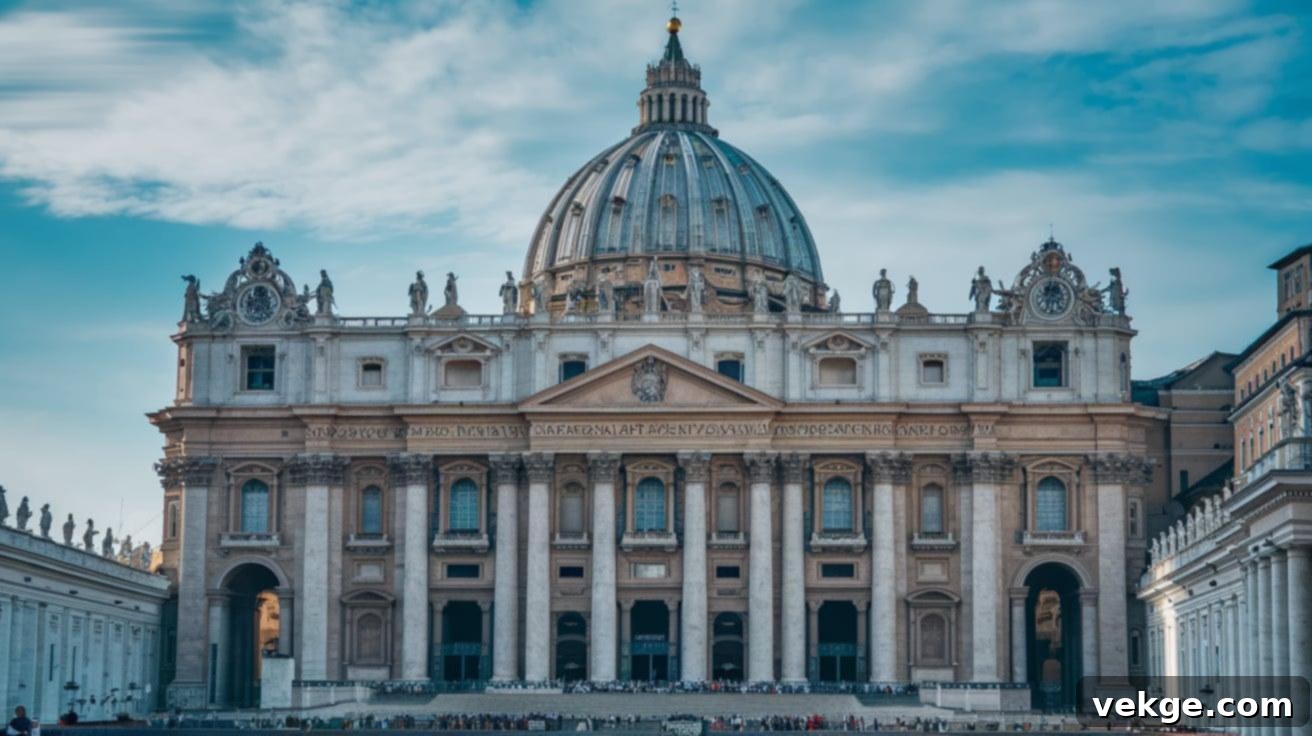
History and Importance: St. Peter’s Basilica, a monumental church in Vatican City, is one of the largest and most significant religious buildings in the world. Completed in 1626 after over a century of construction, its design involved legendary architects like Donato Bramante, Michelangelo, and Gian Lorenzo Bernini. The Basilica stands on the traditional site where St. Peter, the first Pope, is believed to be buried, making it a pivotal pilgrimage destination for Catholics worldwide. Its awe-inspiring dome, designed by Michelangelo, dominates the Roman skyline, while its interior houses priceless artworks, including Michelangelo’s Pietà and Bernini’s Baldacchino, embodying the pinnacle of Renaissance and Baroque artistry.
Best Time to Visit: The off-season (fall or winter) offers fewer crowds and a more serene experience, particularly in the morning or late afternoon. Summer can be extremely crowded, so consider an early morning visit even then.
Visiting Hours: Open daily from 7:00 AM to 6:30 PM (to 7:00 PM in summer). Note that it may be closed or have restricted access during Papal Masses or special events, especially on Sundays.
4. The Pantheon (Rome)
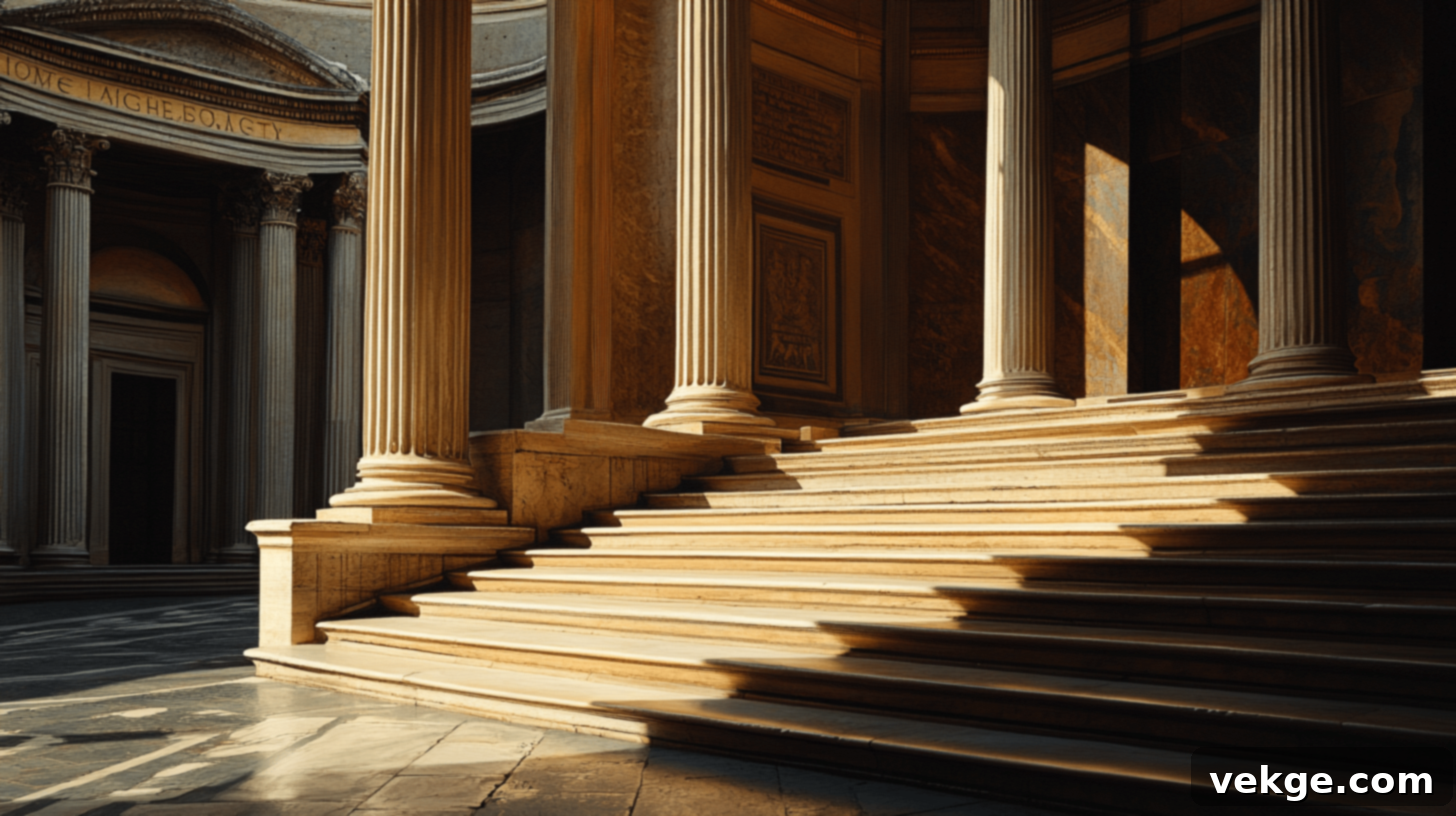
History and Importance: The Pantheon, a remarkably preserved ancient Roman temple, was originally built around 27 BC and later rebuilt by Emperor Hadrian around 118-125 AD. Dedicated to all Roman gods, its most astonishing feature is its massive unreinforced concrete dome, still the largest of its kind in the world. The oculus, an open circular hole at the dome’s apex, serves as the only source of natural light, creating a breathtaking effect. In the 7th century, the Pantheon was converted into a Christian church, which played a crucial role in its exceptional preservation. Its innovative architectural design and engineering continue to influence architects globally, making it a timeless masterpiece of classical antiquity.
Best Time to Visit: Early morning or late afternoon visits are ideal to avoid the largest crowds. The fall and winter months generally see fewer tourists, allowing for a more reflective experience. Entry is often free, but check for any recent changes.
Visiting Hours: Open daily from 9:00 AM to 7:00 PM. It typically closes on major holidays. As it is a functioning church, respectful attire is required.
5. Sistine Chapel (Vatican City)
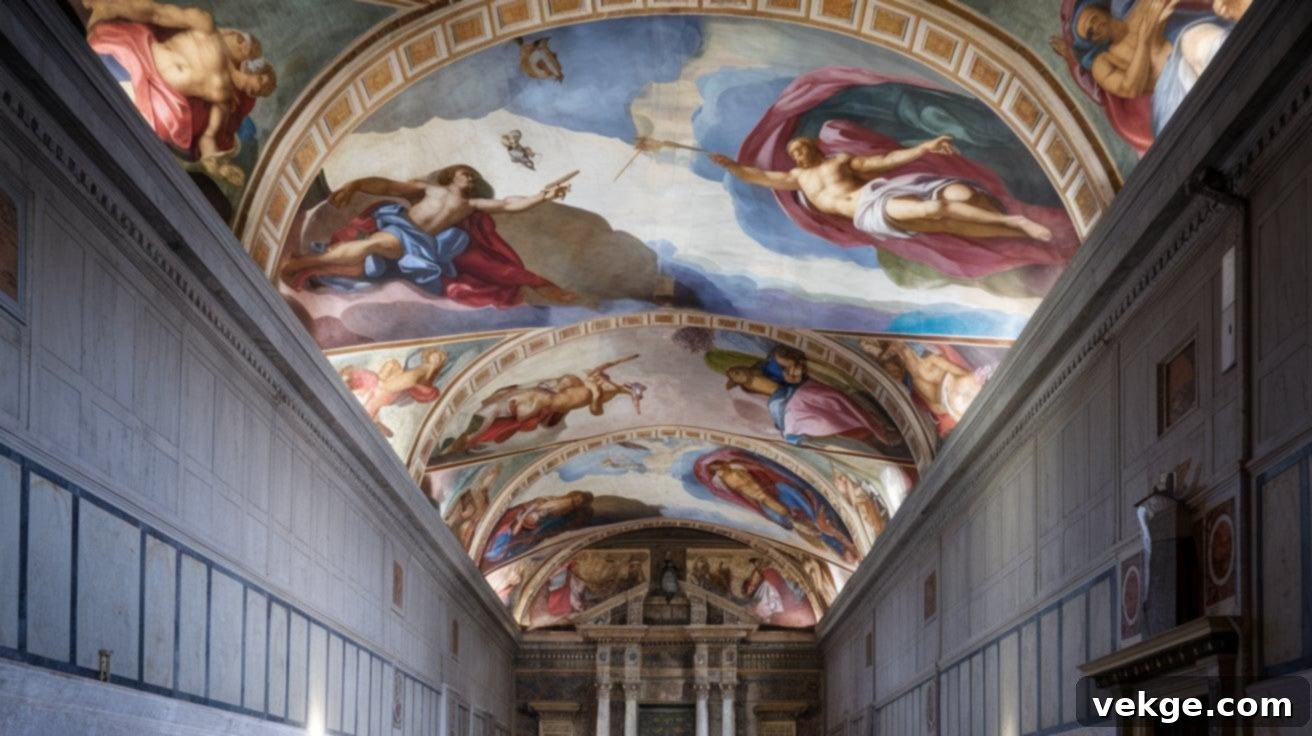
History and Importance: The Sistine Chapel, a world-renowned chapel within the Apostolic Palace in Vatican City, was built between 1475 and 1481. It is most famous for its stunning frescoes by Michelangelo, particularly the monumental ceiling depicting scenes from the Book of Genesis, including the iconic “The Creation of Adam,” and “The Last Judgment” on the altar wall. These masterpieces are considered some of the greatest artworks in Western civilization. Beyond its artistic significance, the Sistine Chapel serves as the site for the Papal Conclave, where cardinals gather to elect new popes, underscoring its profound religious and historical importance within the Catholic Church.
Best Time to Visit: Visiting during the winter months (November to February) generally means fewer crowds, though it’s still popular. Aim for early morning or late afternoon to experience the chapel with more space. Pre-booking Vatican Museum tickets is essential.
Visiting Hours: Open Monday to Saturday from 9:00 AM to 6:00 PM, with extended hours during summer. Last entry is usually 90 minutes before closing. Note that the chapel is part of the Vatican Museums complex.
6. Trevi Fountain (Rome)
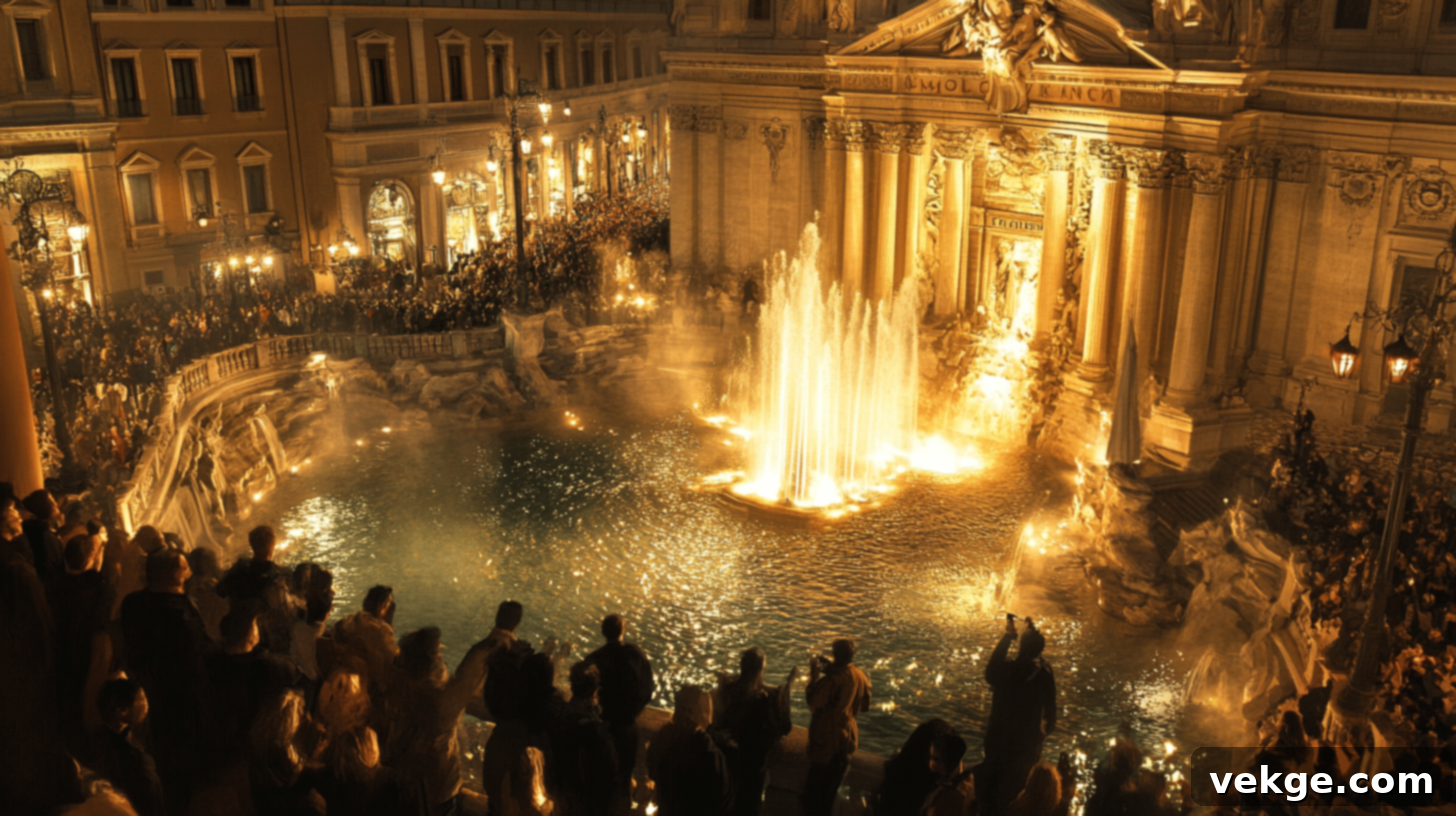
History and Importance: The Trevi Fountain, completed in 1762, is one of Rome’s largest and most famous Baroque fountains, an absolute masterpiece of water, stone, and mythological sculpture. It stands at the junction of three roads (tre vie), giving it its name. The fountain features the sea god Neptune, flanked by Tritons, set against the backdrop of Palazzo Poli. It is fed by the Aqua Virgo, one of Rome’s ancient aqueducts. A popular tradition involves throwing a coin over your shoulder into the fountain: one coin ensures a return to Rome, two coins promise a new romance, and three coins guarantee marriage. Its grandeur and romantic appeal make it a timeless icon of the Eternal City.
Best Time to Visit: The Trevi Fountain is accessible at all hours, but to truly avoid the intense daytime crowds, visit very early in the morning (before 8:00 AM) or late at night. The fountain is beautifully illuminated after dark, offering a magical experience.
Visiting Hours: The fountain is a public space, open 24/7. However, the surrounding streets and shops become extremely busy during the day. Consider visiting in the early hours for a more intimate viewing.
7. Roman Forum (Rome)

History and Importance: The Roman Forum was the pulsating heart of ancient Rome, a sprawling complex of magnificent temples, basilicas, markets, and government buildings that served as the center of Roman public, political, and religious life for over a millennium. From the earliest days of the Republic to the height of the Empire, momentous speeches, elections, public trials, and gladiatorial matches took place here. Walking through its evocative ruins today offers an unparalleled journey back in time, allowing visitors to visualize the daily life, power struggles, and monumental achievements of one of history’s greatest civilizations. It is an indispensable site for understanding the foundations of Western culture.
Best Time to Visit: Spring (April-May) and fall (September-October) provide pleasant weather and more manageable crowds. Mornings, shortly after opening, or late afternoons are ideal for exploration, offering cooler temperatures and better light for photography. Wear comfortable shoes as you’ll be walking extensively.
Visiting Hours: Open daily from 8:30 AM to 7:00 PM (closing earlier in winter). Last entry is usually one hour before closing. Entry is often combined with the Colosseum ticket.
8. Castel Sant’Angelo (Rome)
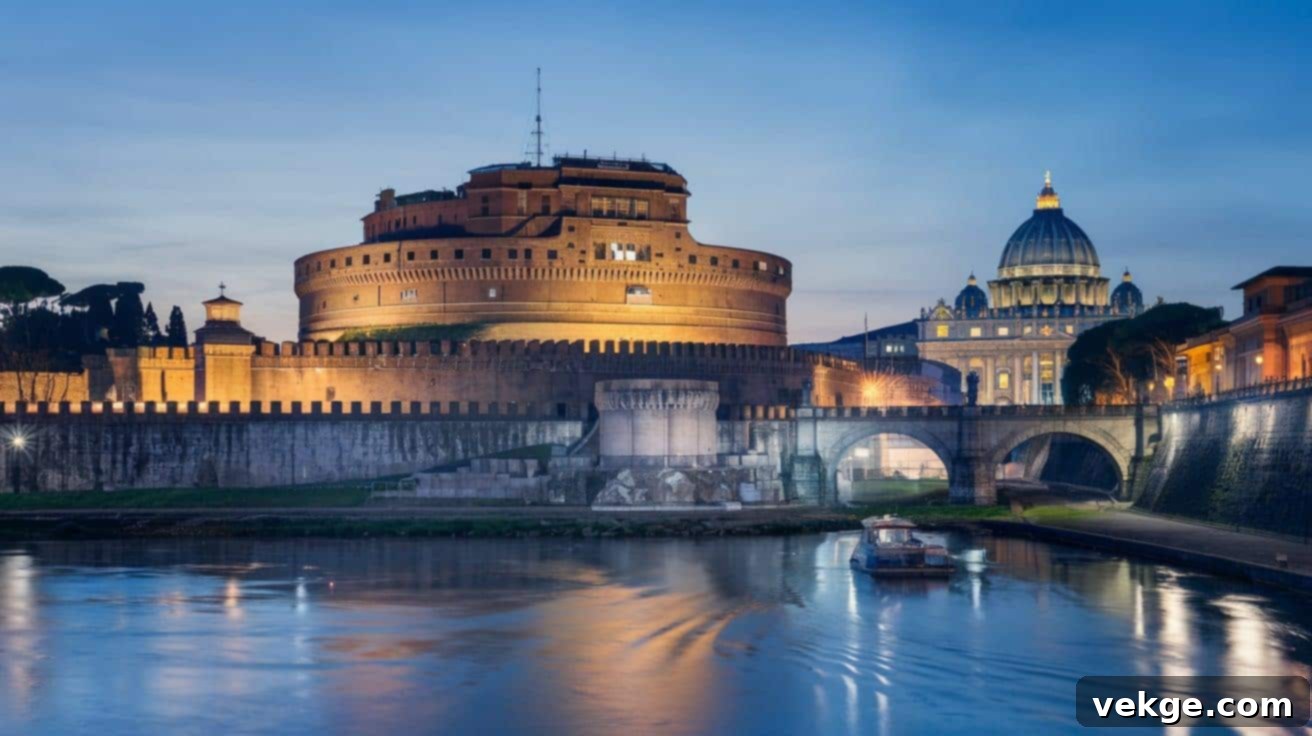
History and Importance: Castel Sant’Angelo, located on the right bank of the Tiber River, boasts a remarkably diverse history. Initially commissioned by Emperor Hadrian as a mausoleum for himself and his family in 139 AD, it later evolved into a fortress, a prison, and eventually a papal residence connected to St. Peter’s Basilica by the Passetto di Borgo, a fortified secret corridor. Today, it functions as a national museum, showcasing various artifacts that tell its layered story through Roman, medieval, and Renaissance periods. Its strategic location offers some of the most spectacular panoramic views of Rome, including the Vatican and the Tiber, making it a highlight for history enthusiasts and photographers alike.
Best Time to Visit: The mild weather of spring (April-May) or fall (September-October) is perfect for exploring the castle and its terraces. Visiting early in the morning or late afternoon can help you avoid the busiest times, especially if you want to enjoy the views in peace.
Visiting Hours: Open Tuesday to Sunday from 9:00 AM to 7:00 PM. It is typically closed on Mondays. The last entry is usually one hour before closing. Check the official website for any public holiday closures.
9. Palazzo Vecchio (Florence)
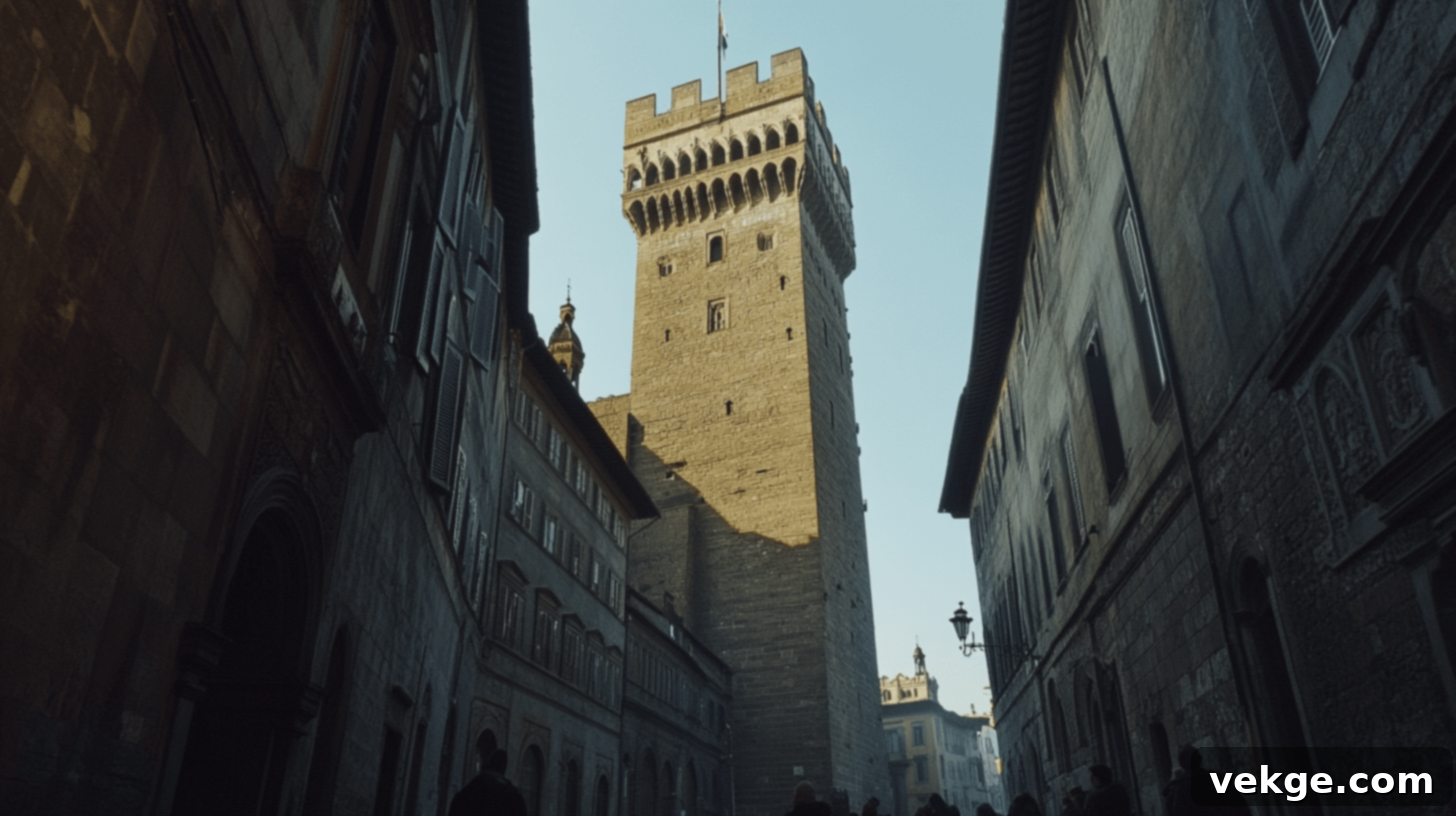
History and Importance: Palazzo Vecchio has served as Florence’s imposing town hall and political heart since the 14th century. Built in a robust Gothic style, it was initially the seat of the Signoria of Florence and later home to the powerful Medici family, who extensively renovated its interiors. Today, it operates as a museum, displaying exquisite Renaissance art, grand frescoes, and elaborate chambers, including the magnificent Salone dei Cinquecento (Hall of the Five Hundred). Its grand architecture and artistic embellishments were deliberately designed to project the wealth and power of the Florentine Republic, making it a focal point for understanding the city’s rich political and artistic heritage.
Best Time to Visit: Late fall (November) or early spring (March) offers pleasant weather for walking around Florence with fewer tourists. Visiting the Palazzo in the morning on a weekday can help you avoid larger groups.
Visiting Hours: Generally open daily from 9:00 AM to 7:00 PM, with shorter hours on Thursdays (often closing at 2:00 PM). Check official schedules for specific dates and holiday variations.
10. Florence Cathedral (Duomo di Firenze)
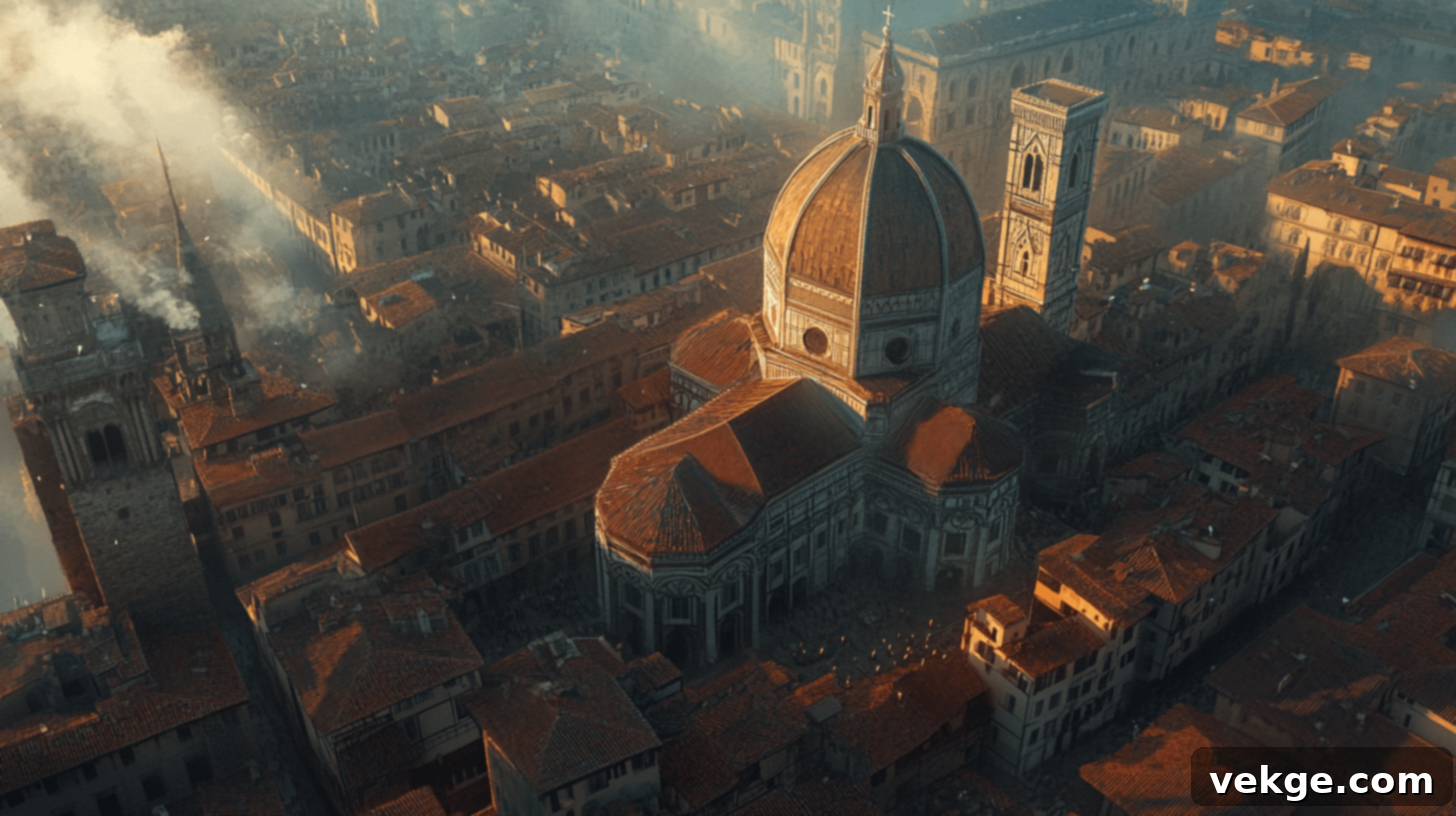
History and Importance: The Florence Cathedral, officially known as the Cattedrale di Santa Maria del Fiore, is a breathtaking masterpiece of Gothic and Renaissance architecture and the most prominent landmark of Florence. Its construction began in 1296 and took over 140 years to complete, culminating in Filippo Brunelleschi’s revolutionary dome – the largest brick dome ever built, which still stands as an engineering marvel. The cathedral’s stunning polychrome marble facade, intricate details, and the adjacent Giotto’s Campanile and Baptistery of St. John create an unforgettable ensemble. It not only represents Florence’s extraordinary artistic achievements but remains an active place of worship and a profound symbol of the city’s enduring legacy.
Best Time to Visit: Early morning or late afternoon is best to avoid the heaviest crowds, especially if you plan to climb the dome or bell tower. Spring and fall typically offer fewer tourists and more comfortable weather conditions.
Visiting Hours: The Cathedral is generally open daily from 10:00 AM to 5:00 PM, but hours can vary significantly, especially for climbing the dome or bell tower. It is often closed on the first Sunday of each month. Always verify specific times and book climb tickets well in advance.
11. Uffizi Gallery (Florence)
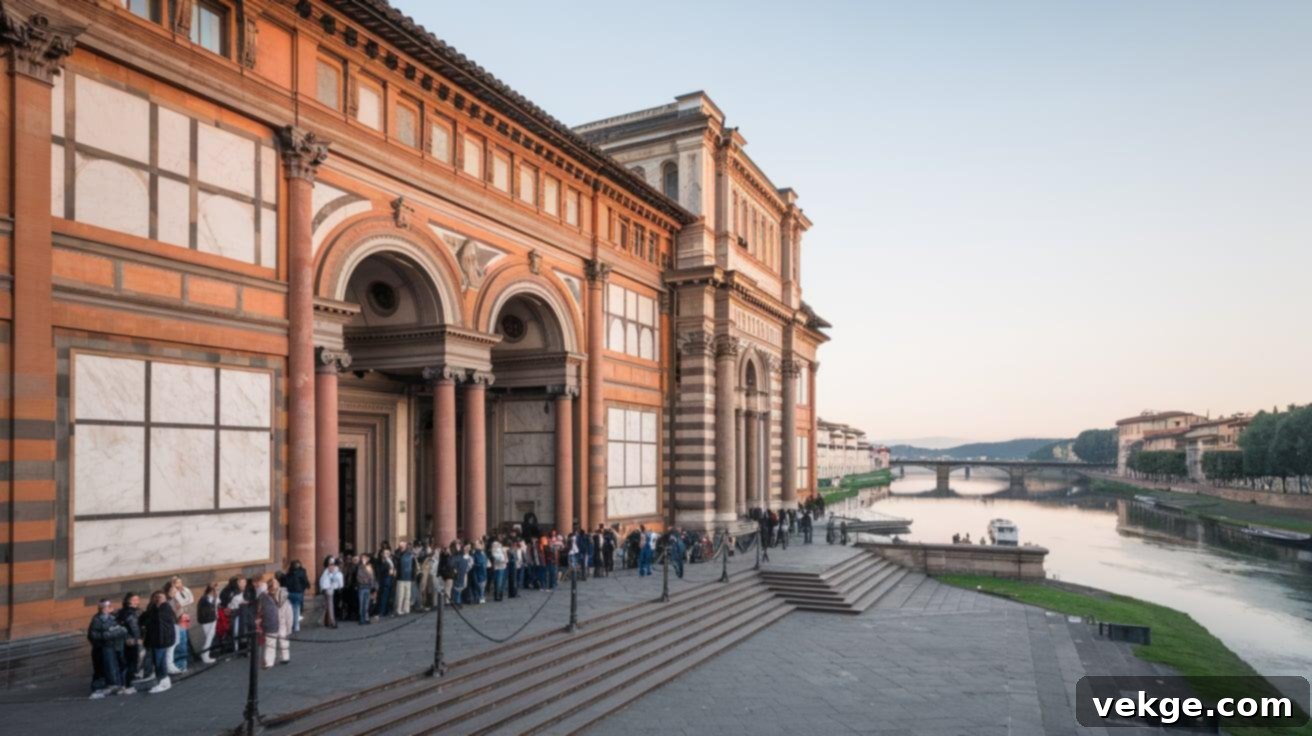
History and Importance: The Uffizi Gallery is one of the world’s oldest and most prestigious art museums, a treasure trove of Renaissance masterpieces. Designed by Giorgio Vasari in the 16th century for Cosimo I de’ Medici, it initially served as government offices (“uffizi”). Over time, the Medici family amassed an incredible collection of art, which eventually formed the core of this magnificent gallery. Today, it houses unparalleled works by celebrated artists such as Botticelli (“The Birth of Venus”), Leonardo da Vinci, Michelangelo, Raphael, and Titian. The gallery offers an immersive journey through the artistic brilliance of the Renaissance, making it an indispensable destination for art lovers and historians.
Best Time to Visit: The winter months (November to February) are generally less crowded, allowing for a more relaxed viewing experience. Early morning, right at opening, is consistently the best time for quieter access, regardless of the season. Pre-booking tickets online weeks or even months in advance is highly recommended to guarantee entry and bypass queues.
Visiting Hours: Open Tuesday to Sunday from 8:15 AM to 6:50 PM. It is consistently closed on Mondays. Last entry is usually 45 minutes before closing. Verify any holiday closures or special exhibition hours.
12. Palazzo Pitti (Florence)
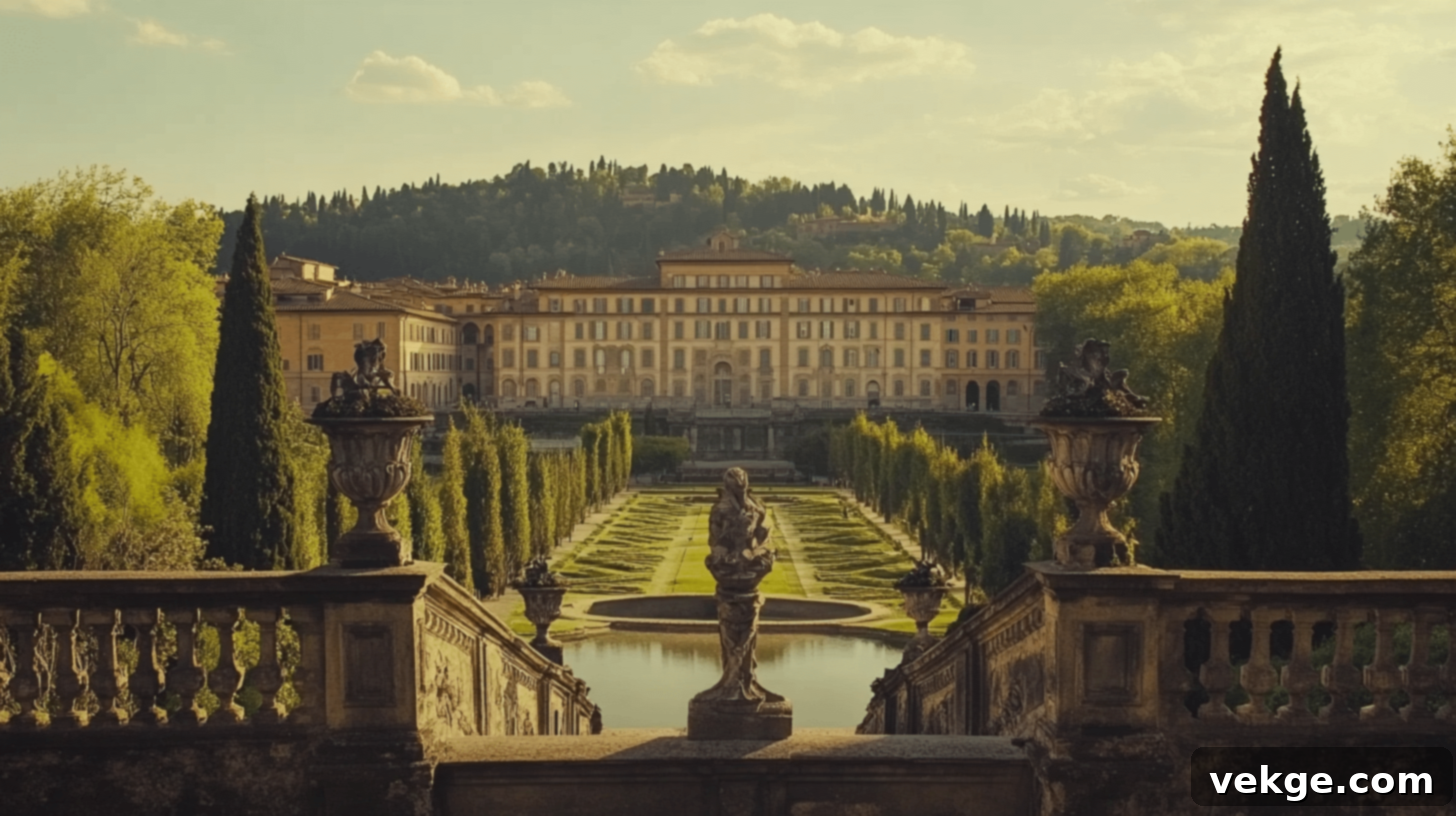
History and Importance: Palazzo Pitti, a sprawling Renaissance palace on the south bank of the Arno River, was initially built for the Pitti family in the 15th century before being acquired and significantly expanded by the powerful Medici family. It served as the primary residence for the Grand Dukes of Tuscany. Today, the vast complex houses several prominent museums, including the Palatine Gallery with its Raphael and Titian masterpieces, the Gallery of Modern Art, the Costume and Fashion Museum, and the Royal Apartments. Behind the palace lie the magnificent Boboli Gardens, an exemplary model of Italian gardens, offering a stunning backdrop and a peaceful retreat. The Palazzo Pitti provides a comprehensive look into the lives of Florentine royalty and the evolution of European art and design.
Best Time to Visit: Spring (April-May) or fall (September-October) offers comfortable weather, ideal for exploring both the extensive museums within the palace and the beautiful Boboli Gardens. Weekday mornings are typically less busy.
Visiting Hours: Open Tuesday to Sunday from 8:15 AM to 6:50 PM. It is closed on Mondays. Individual museums within the palace may have slightly different hours or specific closure days, so always check in advance.
13. Piazza del Duomo (Florence)
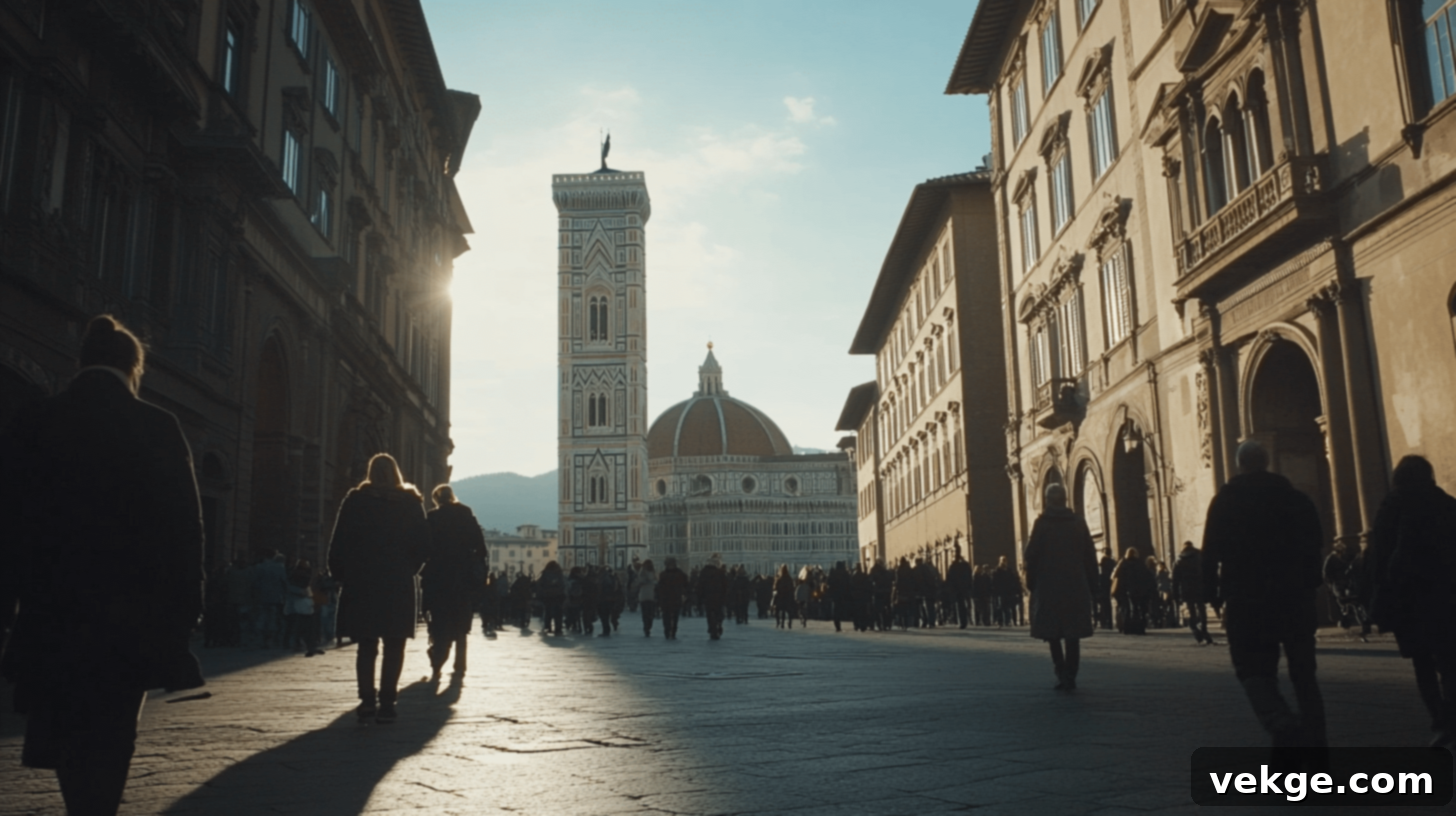
History and Importance: Piazza del Duomo serves as the vibrant spiritual and architectural heart of Florence’s historic center, a UNESCO World Heritage site. This iconic square is home to a magnificent ensemble of some of Italy’s most celebrated structures: the majestic Florence Cathedral (Duomo), with Brunelleschi’s iconic dome; Giotto’s Campanile, a stunning bell tower; and the ancient Baptistery of St. John, renowned for Ghiberti’s bronze doors, known as the “Gates of Paradise.” For centuries, the square has been the backdrop for significant religious ceremonies, political events, and social gatherings, reflecting Florence’s enduring influence on art, architecture, and culture. It remains one of Italy’s most visited and photographed public spaces.
Best Time to Visit: The piazza itself is always open. For a more peaceful experience, visit early morning to enjoy the grandeur before the crowds arrive, or in the late afternoon. The square is particularly beautiful at night when the monuments are illuminated, offering a magical atmosphere for photography.
Visiting Hours: The Piazza del Duomo is a public space accessible 24/7. However, individual attractions within the piazza (Cathedral, Dome, Bell Tower, Baptistery, Museum) have their own specific visiting hours, which vary by season and day. Always check official websites for detailed schedules and booking information.
14. The Rialto Bridge (Venice)
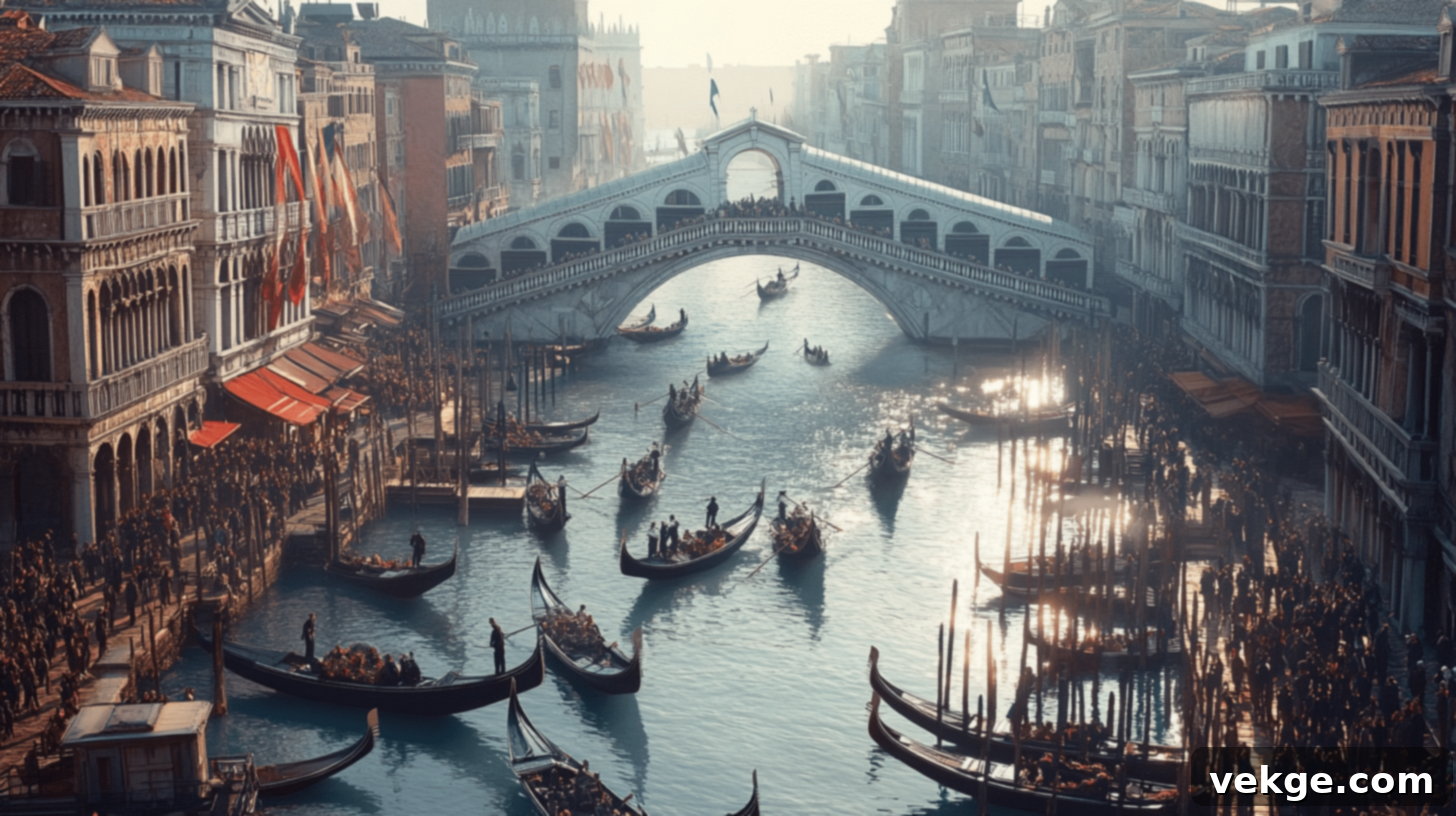
History and Importance: The Rialto Bridge (Ponte di Rialto), completed in 1591, is one of Venice’s most iconic and oldest bridges, famously spanning the Grand Canal. Originally a pontoon bridge, then a wooden structure that repeatedly collapsed, it was finally rebuilt in durable stone, an engineering feat for its time. Designed by Antonio da Ponte, it connects the bustling San Marco and San Polo districts, serving as a vital commercial hub. The bridge is distinctive for its three walkways: two along the outer balustrades and a wider central arcade lined with charming shops selling jewelry, souvenirs, and local crafts. It remains a vibrant marketplace and a prime vantage point for experiencing the quintessential Venetian canal life.
Best Time to Visit: To best experience the Rialto Bridge and its surrounding market area, visit early in the morning (before 9:00 AM) or late in the afternoon/early evening to avoid the densest crowds. The quieter winter months (November to February) also offer a less congested experience. It’s beautiful at any time of day, but the light is often best in the mornings.
Visiting Hours: The bridge is a public thoroughfare and is open 24/7. Shops along the bridge typically operate from 9:00 AM to 6:00 PM. Expect high pedestrian traffic during peak daytime hours.
15. St. Mark’s Basilica (Venice)
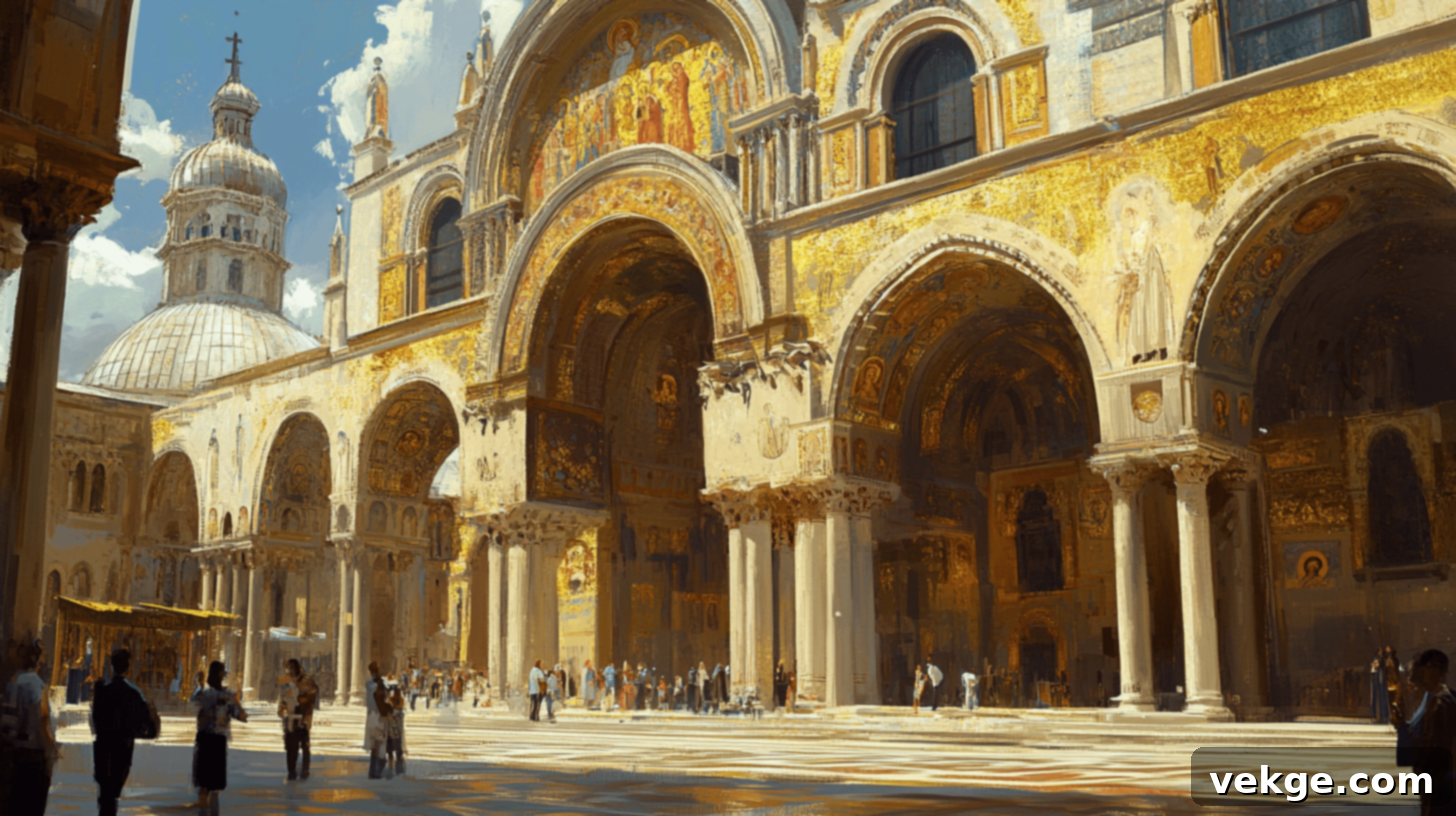
History and Importance: St. Mark’s Basilica (Basilica di San Marco), completed in the 11th century, is an extraordinary masterpiece of Italo-Byzantine architecture and a crowning jewel of Venice. Originally built to house the relics of St. Mark, Venice’s patron saint, it served as the Doge’s chapel and a symbol of the Venetian Republic’s wealth and power. The basilica is renowned for its opulent golden mosaics, which adorn its domes and walls, depicting biblical scenes and stories of St. Mark, creating a dazzling, ethereal interior. Its unique blend of Eastern and Western architectural styles, including five domes and an ornate facade, makes it one of the most distinctive and beautiful churches in the world and a testament to Venice’s historical connections.
Best Time to Visit: Early morning or late afternoon visits are best to experience the basilica with fewer crowds. The quieter months from November to March offer a more serene environment. Booking timed entry tickets in advance is highly recommended, especially during peak season.
Visiting Hours: Open Monday to Saturday from 9:45 AM to 5:00 PM, and on Sundays from 2:00 PM to 5:00 PM. Hours may be subject to change for religious services or special events, so always confirm on the official website.
16. Doge’s Palace (Venice)
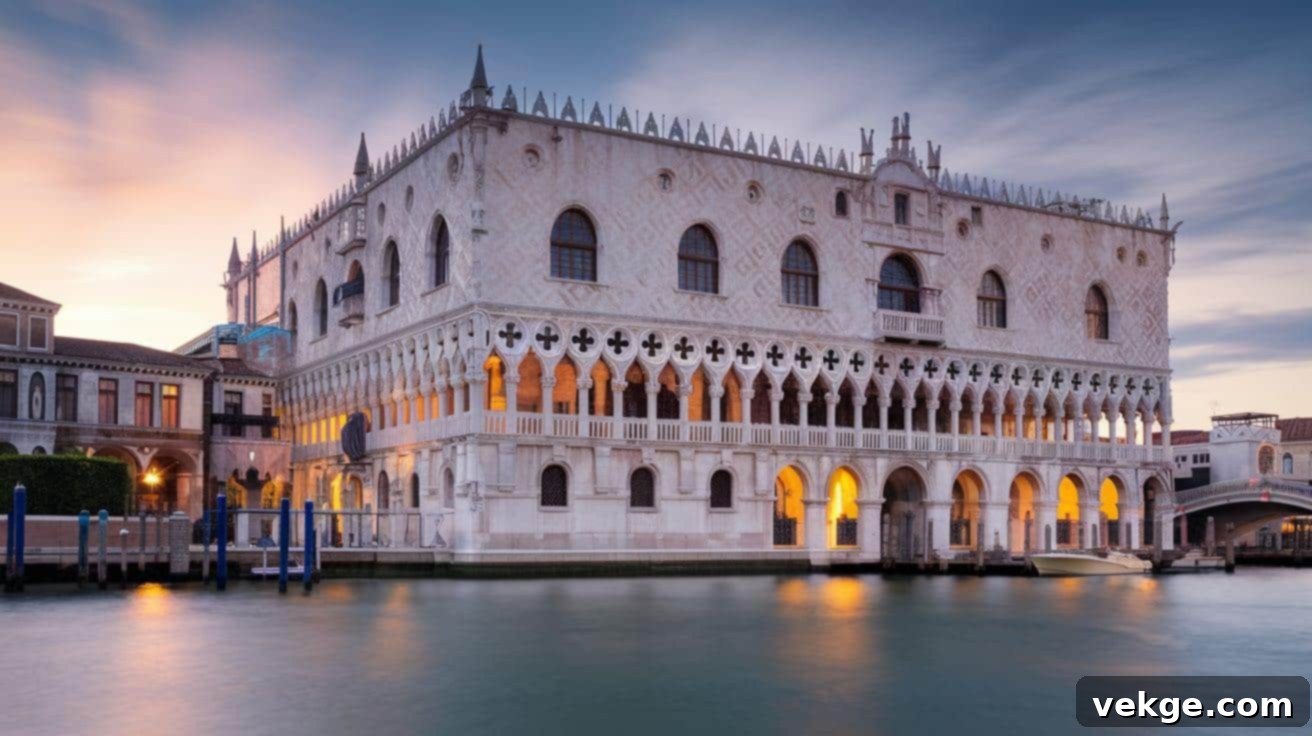
History and Importance: The Doge’s Palace (Palazzo Ducale), a magnificent Gothic palace situated in St. Mark’s Square, was the official residence of the Doge (the supreme authority of the former Venetian Republic) and the seat of its government, law courts, and prisons. Built primarily in the 14th century, its unique architectural style features delicate pink and white marble, intricate stonework, and grand arcades, reflecting Venice’s wealth and maritime power. Today, it operates as a superb museum, offering visitors an immersive journey through Venetian history, art, and governance. Highlights include the Doge’s apartments, the institutional chambers adorned with works by Tintoretto and Veronese, and the Bridge of Sighs leading to the New Prison, providing a profound insight into the complex history of the Venetian Republic.
Best Time to Visit: Early morning or late afternoon during the shoulder seasons (spring or fall) or quieter winter months are ideal for a more comfortable visit with fewer crowds. Pre-booking tickets online is highly advisable to avoid long queues.
Visiting Hours: Open daily from 9:00 AM to 7:00 PM, with the last entry typically at 6:00 PM. Hours may vary seasonally, so it’s always best to check the official website before your visit.
17. Sassi di Matera (Basilicata)

History and Importance: The Sassi di Matera, located in the Basilicata region, are an extraordinary complex of ancient cave dwellings, rock-hewn churches, and monasteries carved into the limestone ravines. Dating back to prehistoric times, this UNESCO World Heritage site is recognized as one of the oldest continuously inhabited settlements in the world, showcasing a unique human adaptation to the environment. Once a symbol of poverty, the Sassi have undergone a remarkable revitalization, transforming into a vibrant cultural center that offers a fascinating glimpse into the lives of early humans and the evolution of a community. Exploring its winding alleys and cave systems is like stepping into a living history book.
Best Time to Visit: Spring (April-May) and fall (September-October) offer mild temperatures, perfect for exploring the extensive Sassi on foot, with fewer tourists than the peak summer months. Early mornings are particularly peaceful and offer excellent photographic opportunities.
Visiting Hours: The Sassi area is an open urban landscape that can be explored at any time. However, individual museums, cave churches, and restored cave houses typically have opening hours from 9:00 AM to 7:00 PM. Check local listings for specific attraction times.
18. The Trulli of Alberobello (Puglia)

History and Importance: The Trulli of Alberobello, located in the charming region of Puglia, are unique, dry-stone huts with distinctive cone-shaped roofs, built using ancient prehistoric building techniques without mortar. These fascinating structures, many of which are still inhabited or converted into shops and accommodations, were originally rural dwellings and warehouses. Alberobello boasts over 1,000 trulli, forming two UNESCO World Heritage-listed districts, Rione Monti and Aia Piccola. This architectural marvel is not only a testament to ingenious traditional construction but also serves as the iconic symbol of Puglia, offering visitors a magical and otherworldly experience into a truly distinctive Italian cultural landscape.
Best Time to Visit: Spring (April-May) or fall (September-October) provides pleasant weather for wandering through the trulli-lined streets, with fewer tourists than the busy summer period. Early mornings or late afternoons are ideal for photography and a more tranquil experience.
Visiting Hours: The town of Alberobello and its trulli districts are open year-round for exploration. Most commercial trulli (shops, restaurants) are open from 10:00 AM to 6:00 PM, with variations based on season and specific business.
19. Pompeii (Naples)
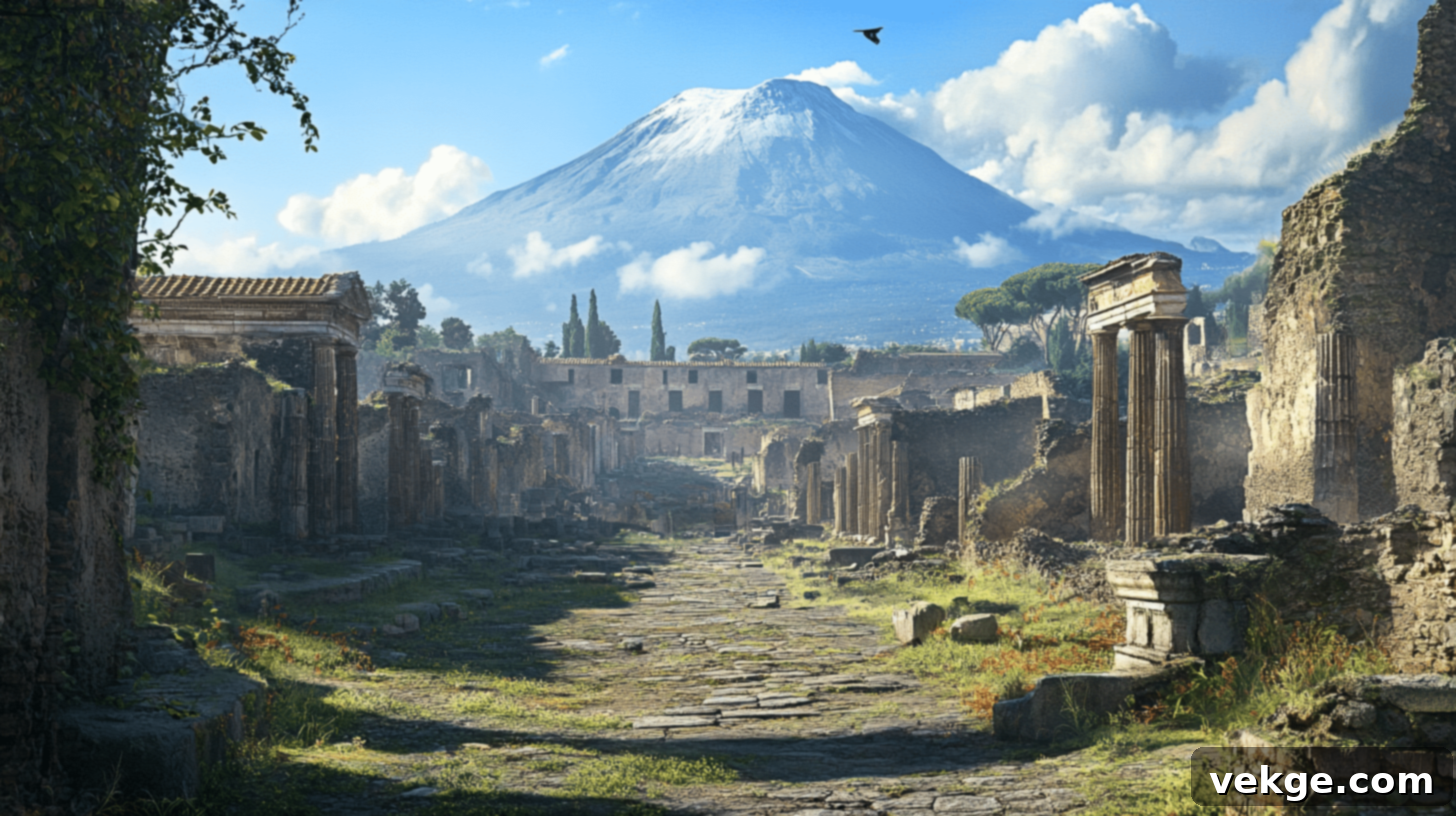
History and Importance: Pompeii, an ancient Roman city near modern Naples, met a tragic end when it was catastrophically buried under volcanic ash and pumice during the eruption of Mount Vesuvius in 79 AD. This devastating event, however, remarkably preserved the city’s homes, shops, temples, and public buildings almost exactly as they were nearly 2,000 years ago. Today, the excavated ruins offer an unparalleled window into daily Roman life, providing incredibly detailed insights into their architecture, art, social customs, and infrastructure. From the intricate frescoes of private villas to the well-preserved streets and the poignant plaster casts of victims, Pompeii remains a profoundly moving and historically invaluable UNESCO World Heritage site.
Best Time to Visit: Spring (April-May) and early fall (September-October) offer mild weather, which is ideal for exploring the extensive site, and typically fewer crowds than summer. Visit as early as possible in the morning to avoid the afternoon heat and larger tour groups.
Visiting Hours: Open daily from 9:00 AM to 7:00 PM (last entry 5:30 PM). Winter hours are shorter, usually closing around 5:00 PM. Always check the official Parco Archeologico di Pompei website for current entry regulations and closures.
20. Cinque Terre (Liguria)
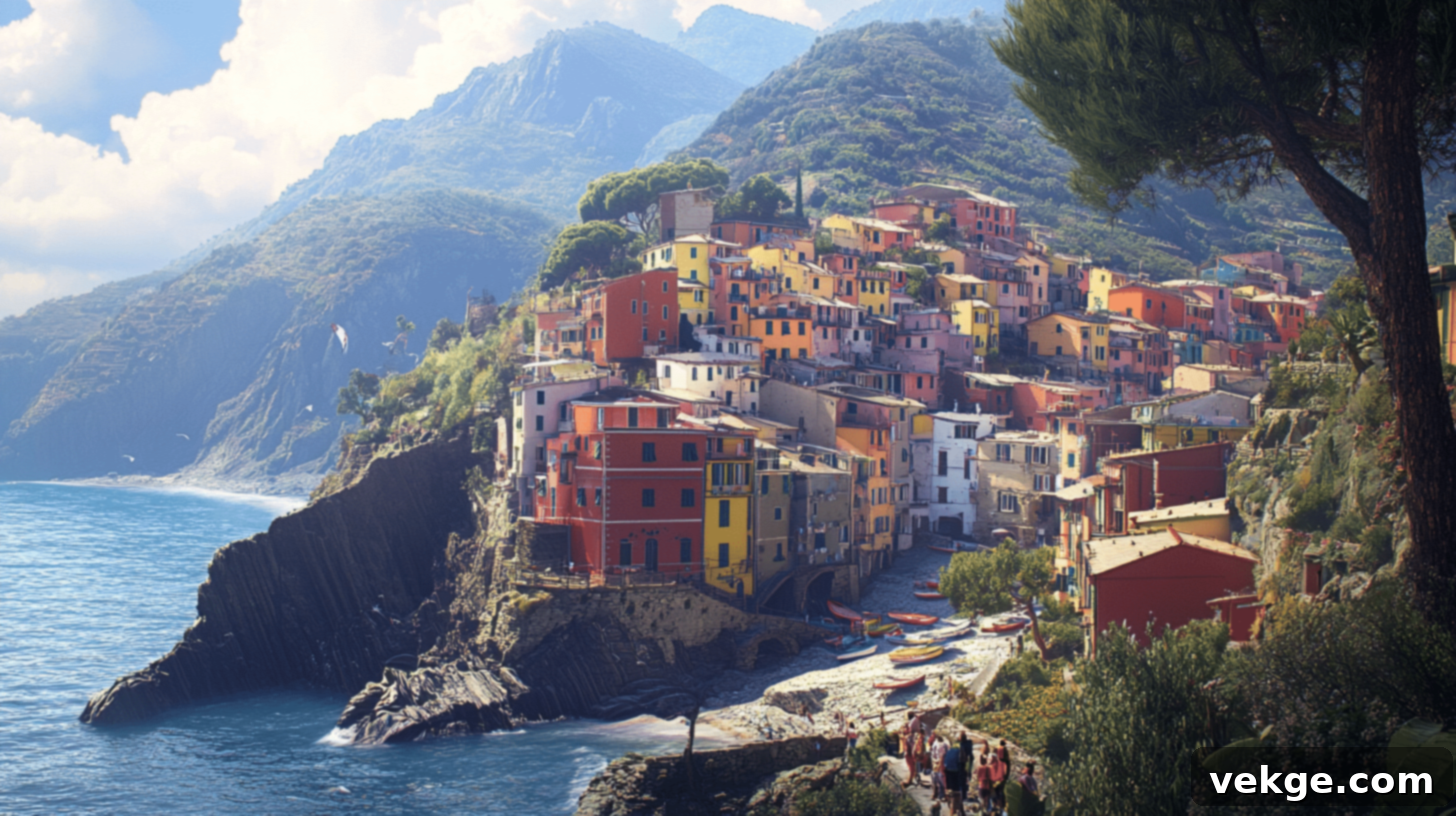
History and Importance: Cinque Terre, meaning “Five Lands,” is a breathtakingly beautiful and rugged stretch of coastline on the Italian Riviera in Liguria, comprising five charming, colorful cliffside villages: Monterosso al Mare, Vernazza, Corniglia, Manarola, and Riomaggiore. This UNESCO World Heritage site is renowned for its dramatic landscapes, terraced vineyards, and a network of scenic hiking trails that connect the villages, offering stunning views of the Mediterranean Sea. The unique architecture of brightly painted houses clinging to the cliffs, along with the traditional fishing culture, creates an idyllic and unforgettable Italian experience. It’s a testament to human ingenuity in adapting to a challenging natural environment while preserving its beauty.
Best Time to Visit: Spring (April-May) or fall (September-October) offers the most pleasant weather for hiking and exploring, with moderate temperatures and significantly smaller crowds than the busy summer months. Summer can be very crowded and hot.
Visiting Hours: The villages are accessible year-round. However, the hiking trails are best enjoyed from April to October. Some trails may close due to weather or maintenance, so check the Cinque Terre National Park website for current conditions.
21. Duomo di Siena (Siena)
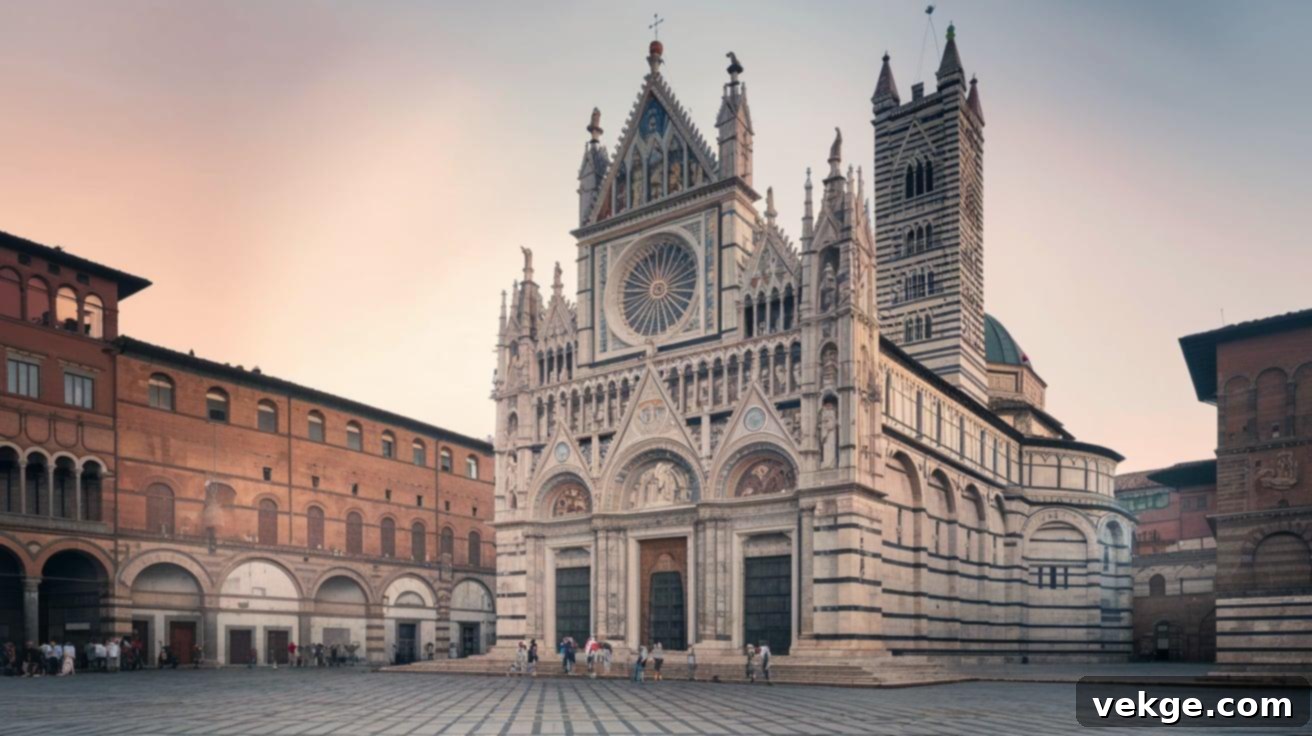
History and Importance: The Siena Cathedral (Duomo di Siena) is an exquisite masterpiece of Italian Gothic architecture, dating back to the 12th century. Its facade, adorned with intricate sculptures and vibrant marble, is among the most impressive in Italy. Inside, visitors are captivated by its stunning striped marble pillars, a magnificent pulpit by Nicola Pisano, and an extraordinary inlaid marble floor depicting allegorical and biblical scenes – a unique artistic treasure. The cathedral houses artwork by celebrated artists such as Donatello and Michelangelo, reflecting Siena’s historical wealth and profound religious importance during the medieval period. It remains a powerful symbol of Sienese artistic and cultural heritage.
Best Time to Visit: Spring (April-May) or fall (September-October) offers pleasant weather for exploring Siena and its cathedral, with fewer crowds than the peak summer tourist season. Visiting in the late morning or early afternoon generally provides good lighting for the interior.
Visiting Hours: Open daily, typically from 10:30 AM to 5:30 PM, but hours can vary significantly by season and for religious holidays or services. Always check the official Opera della Metropolitana website for the most accurate schedule and ticket information.
22. Orvieto Cathedral (Umbria)
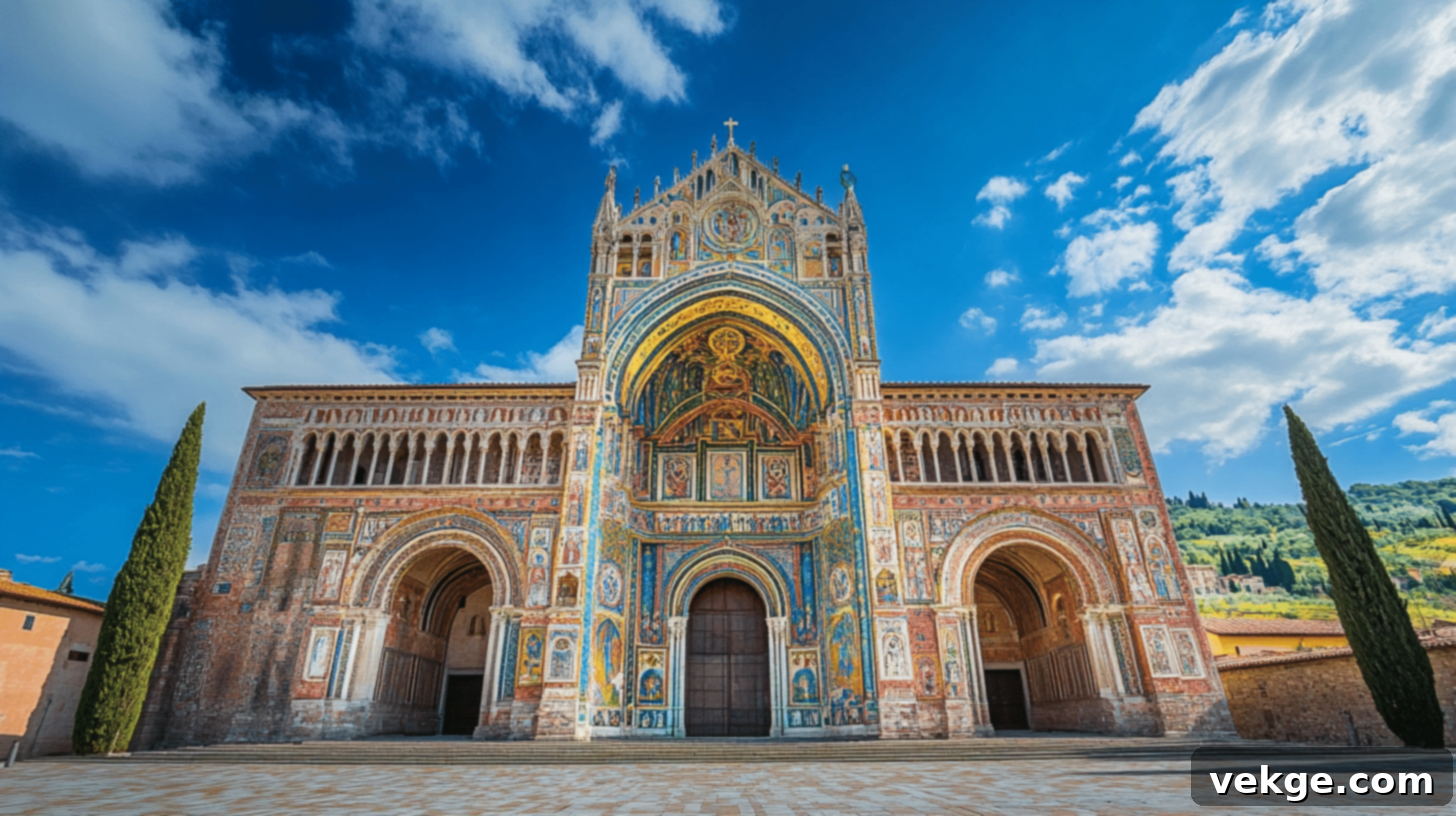
History and Importance: Orvieto Cathedral (Duomo di Orvieto) is a magnificent example of Italian Gothic architecture, proudly standing atop a volcanic tuff hill in Umbria. Construction began in 1290 and spanned several centuries, culminating in the 16th century. The cathedral is most celebrated for its dazzling facade, a kaleidoscope of golden mosaics, intricate bas-reliefs, and delicate sculptures that tell biblical stories, making it one of the most richly adorned facades in Italy. Inside, visitors are drawn to the Chapel of San Brizio, which contains breathtaking frescoes by Luca Signorelli, considered a precursor to Michelangelo’s Sistine Chapel. This cathedral is not only a major religious site but also a stunning testament to medieval Italian artistic and architectural genius.
Best Time to Visit: Late spring (May-June) or early fall (September-October) offers ideal weather conditions for exploring Orvieto and its cathedral, without the intense heat or crowds of summer. Weekday visits are generally less busy.
Visiting Hours: Open daily, generally from 9:00 AM to 7:00 PM. On Sundays and religious holidays, it typically opens after morning mass (around 1:00 PM). Always check the official website for current opening times and any variations.
23. Teatro alla Scala (Milan)
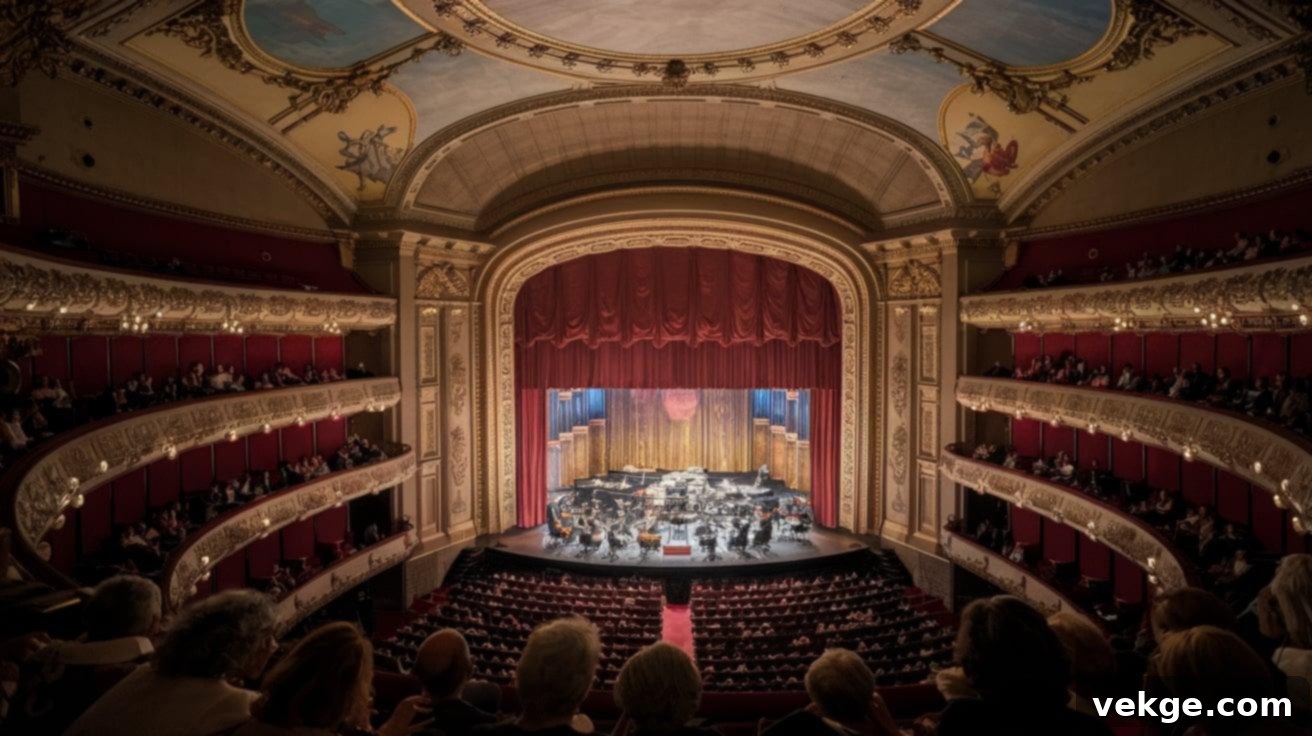
History and Importance: Teatro alla Scala, often simply called La Scala, is one of the world’s most iconic and prestigious opera houses, located in Milan. Opened in 1778, it quickly became a temple of opera, renowned for its exquisite acoustics, elegant neoclassical design, and opulent interior. La Scala has hosted the premieres of countless famous operas and ballets by legendary composers such as Verdi, Puccini, and Rossini, and has showcased the greatest singers and conductors in operatic history. It remains a vibrant cultural institution, a mecca for opera and ballet enthusiasts, embodying the enduring legacy of Italian performing arts and a pinnacle of cultural expression.
Best Time to Visit: Spring or fall are excellent times to visit Milan, as opera season is in full swing, and tickets might be easier to secure outside of major premiere periods. To visit the museum, weekday mornings are often quieter. Pre-booking performance tickets well in advance is essential.
Visiting Hours: The La Scala Museum is open Tuesday to Sunday from 9:00 AM to 12:30 PM and 1:30 PM to 5:30 PM (last entry 30 minutes before closing). Performance schedules vary greatly; check the official website for opera, ballet, and concert listings.
24. Sforzesco Castle (Milan)
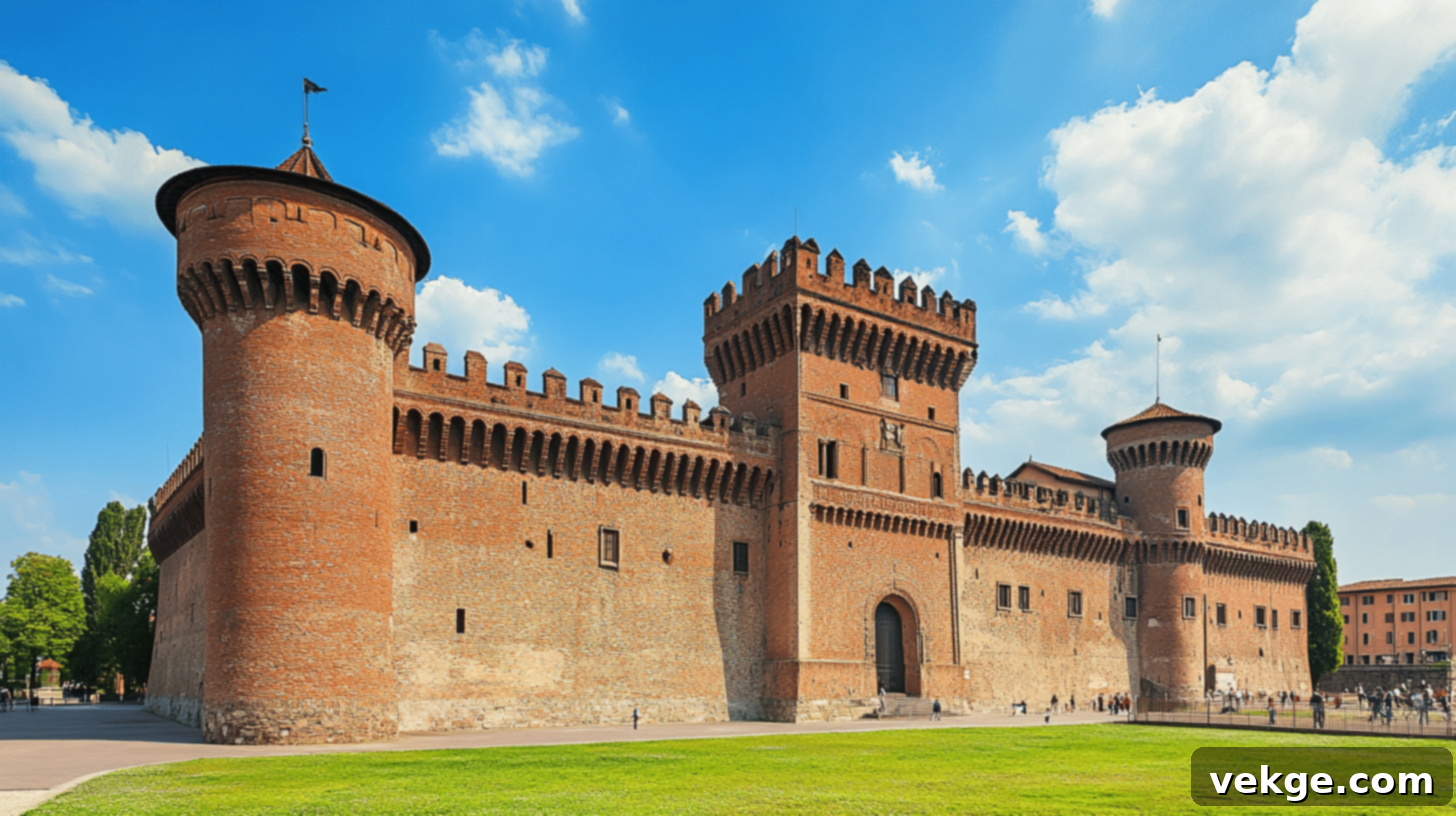
History and Importance: Sforzesco Castle (Castello Sforzesco) is a magnificent Renaissance fortress and one of Milan’s most prominent landmarks. Originally built in the 15th century by Francesco Sforza, Duke of Milan, on the remnants of a medieval fortification, it served as a military stronghold, a ducal residence, and a symbol of power. Today, the expansive castle complex houses several important civic museums and art collections, including Michelangelo’s Rondanini Pietà, collections of ancient art, musical instruments, and a Pinacoteca with works by Mantegna and Bellini. Its impressive walls, grand courtyards, and imposing towers offer a deep dive into Milan’s rich history, art, and the powerful families that shaped its destiny.
Best Time to Visit: Spring (April-May) and fall (September-October) offer mild weather, perfect for exploring the castle’s courtyards and museums, with fewer crowds than the peak summer months. Weekday mornings, shortly after opening, are generally the quietest times.
Visiting Hours: Open Tuesday to Sunday from 9:00 AM to 5:30 PM. It is closed on Mondays. The castle grounds (courtyards) are often accessible for longer hours, sometimes until late evening. Check the official website for museum and grounds specific hours.
25. The Duomo di Milano (Milan)
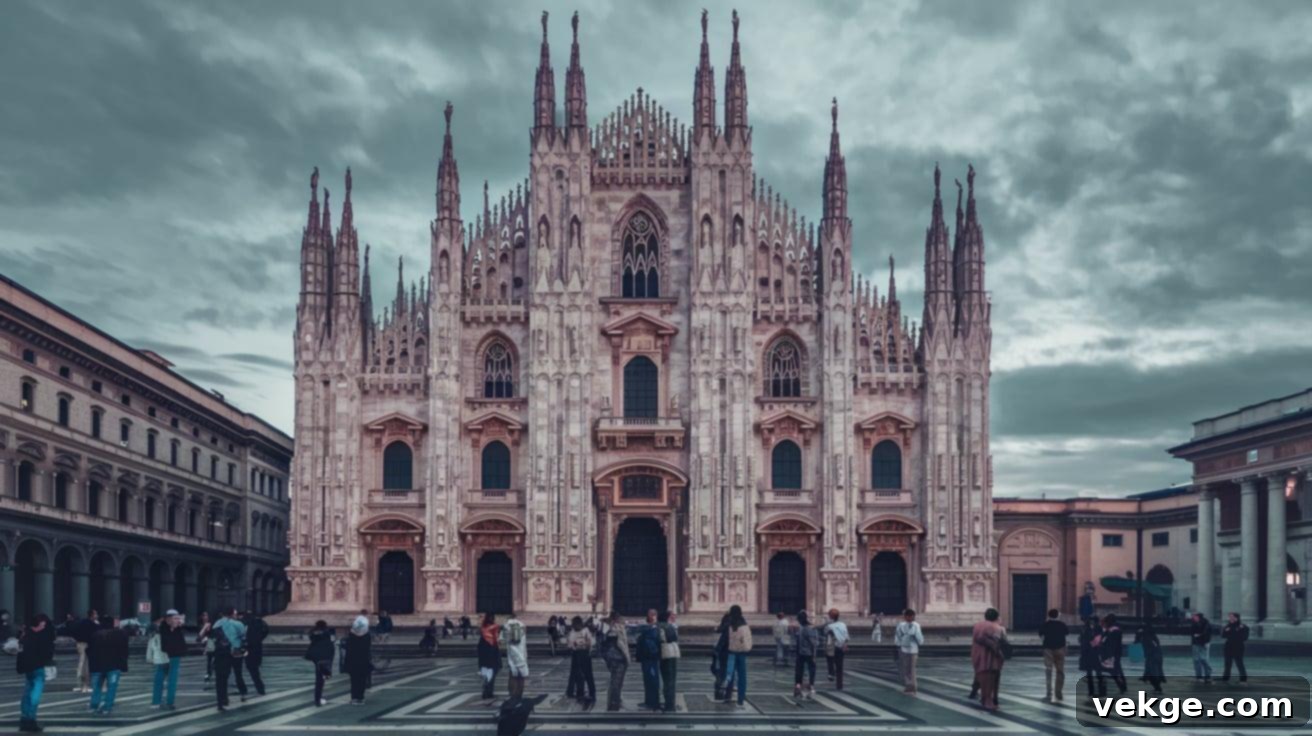
History and Importance: The Milan Cathedral (Duomo di Milano) is Italy’s largest Gothic cathedral and one of the most magnificent churches in Europe, truly defining Milan’s skyline. Its construction began in 1386 and remarkably continued for nearly six centuries, resulting in a breathtaking fusion of architectural styles. The cathedral is famed for its forest of spires, intricate statuary (over 3,400 statues), and the Madonnina, a golden statue of the Virgin Mary atop its tallest spire. Visitors can ascend to the rooftop for spectacular panoramic views of Milan. Beyond its architectural grandeur, the Duomo serves as a vital religious center and a profound symbol of Milan’s enduring cultural, artistic, and spiritual history.
Best Time to Visit: Spring (April-May) and fall (September-October) offer comfortable weather and more manageable crowds. Arriving early in the morning, shortly after opening, is highly recommended to avoid the rush, especially if you plan to visit the rooftop.
Visiting Hours: The Cathedral is generally open daily from 9:00 AM to 7:00 PM. The rooftop access typically opens from 9:00 AM to 6:00 PM. Last entries are usually 45-60 minutes before closing. Always check the official website for up-to-date information and any special event closures.
26. Basilica di San Francesco (Assisi)
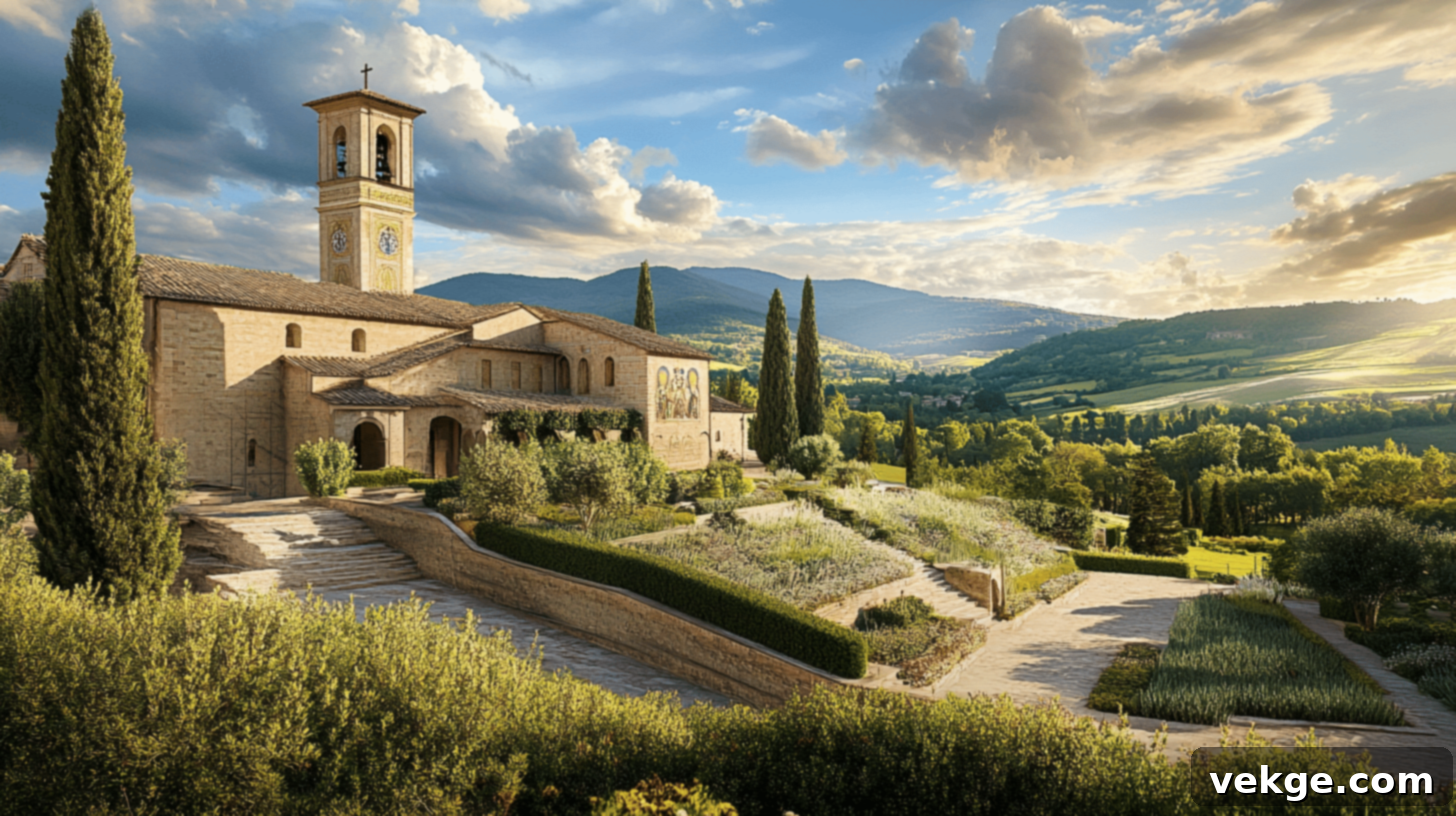
History and Importance: The Basilica of St. Francis (Basilica di San Francesco) in Assisi is one of the most important pilgrimage sites in Italy and a UNESCO World Heritage site, dedicated to St. Francis, the founder of the Franciscan Order. Built in the early 13th century, it is renowned for its two distinct churches—the Lower Basilica and the Upper Basilica—and especially for the magnificent fresco cycles by Giotto and his school, which depict scenes from the life of St. Francis. These frescoes are pivotal works in the history of Italian art, marking a transition from Byzantine to Renaissance styles. The Basilica not only serves as a profound spiritual sanctuary but also stands as a monumental testament to medieval artistic innovation and the enduring legacy of St. Francis.
Best Time to Visit: Spring (April-May) or fall (September-October) offers cooler weather and fewer crowds, making for a more peaceful and contemplative visit. Early mornings are particularly serene, allowing visitors to fully appreciate the basilica’s spiritual atmosphere and artistic details.
Visiting Hours: Open daily from 6:30 AM to 7:00 PM, with variations for religious services. The Lower and Upper Basilicas have slightly different opening times. Always consult the official website of the Basilica for the most accurate visiting hours and any specific guidelines for visitors.
27. The Valley of the Temples (Agrigento)

History and Importance: The Valley of the Temples (Valle dei Templi) in Agrigento, Sicily, is one of the most outstanding examples of Greater Greece art and architecture and a UNESCO World Heritage site. Dating back to the 5th century BC, this archaeological park preserves a series of magnificent Doric temples that once formed part of the ancient Greek city of Akragas. Among them, the Temple of Concordia stands as one of the best-preserved Greek temples in the entire world, almost rivalling the Parthenon in its condition. The site offers a profound insight into the power, wealth, and sophisticated culture of the ancient Greek civilization that flourished in Sicily, making it an unmissable destination for history and archaeology enthusiasts.
Best Time to Visit: Spring (March-May) and fall (September-October) offer mild temperatures, ideal for extensive walking around the site, and generally fewer tourists. Visit early in the morning to avoid the intense midday heat and large groups, ensuring a more comfortable and reflective experience.
Visiting Hours: Open daily from 8:30 AM to 7:00 PM (with extended hours during peak summer season). Last entry is typically one hour before closing. Evening visits during summer are sometimes offered, providing a magical perspective of the illuminated temples.
28. The Baths of Caracalla (Rome)
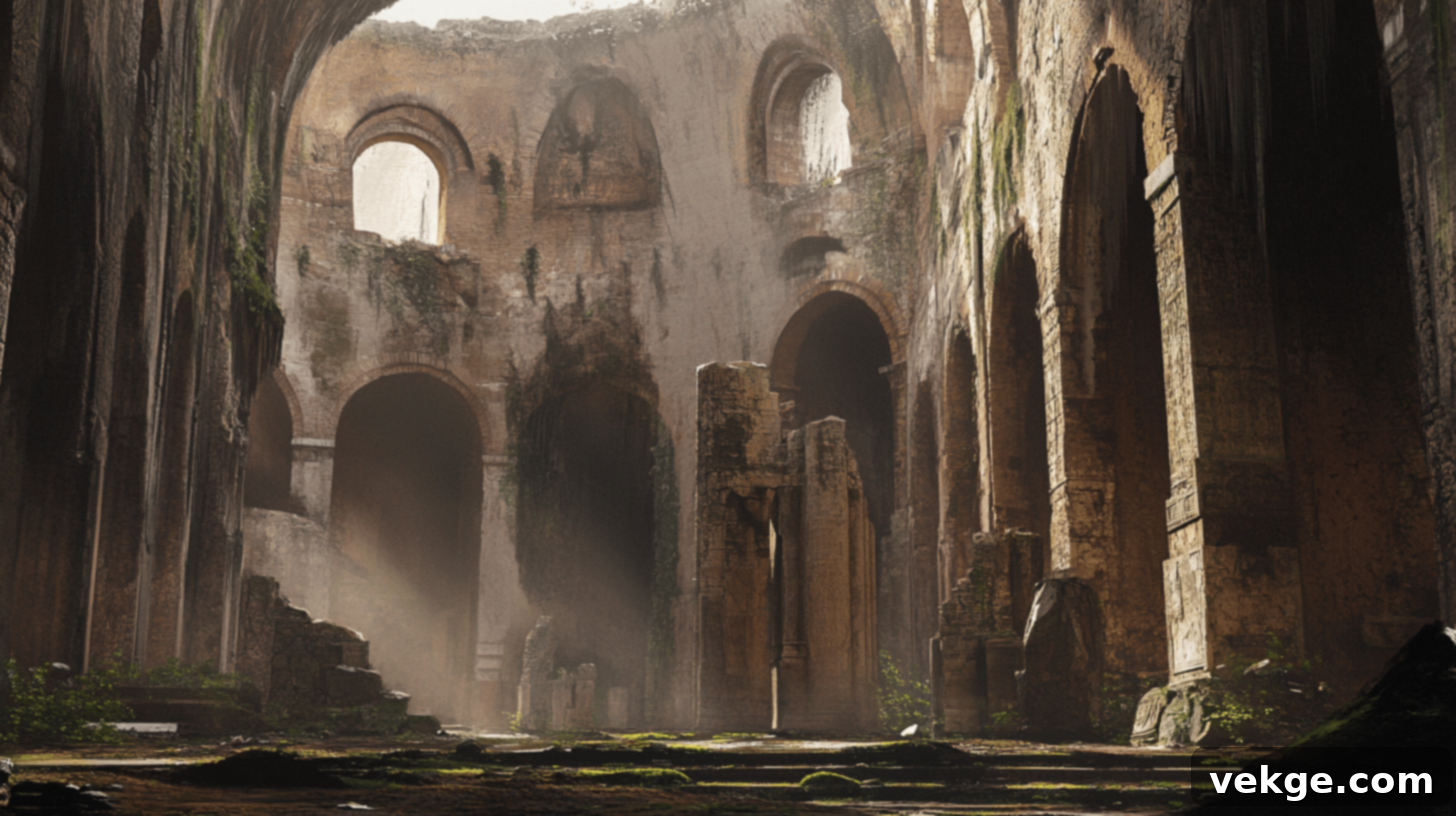
History and Importance: The Baths of Caracalla (Terme di Caracalla) were colossal public baths, or thermae, in ancient Rome, constructed between 212 and 217 AD under Emperor Caracalla. Far more than just bathing facilities, this massive complex served as a vital social and cultural center for Romans, encompassing cold pools (frigidarium), warm rooms (tepidarium), hot baths (caldarium), gymnasiums, libraries, and gardens. Capable of accommodating over 1,600 bathers at a time, its immense scale and luxurious design, featuring intricate mosaics, marble, and sculptures, showcased the zenith of Roman engineering and imperial wealth. The impressive ruins today continue to inspire awe, offering a tangible connection to the daily life and leisure of ancient Romans.
Best Time to Visit: Spring (April-May) or early fall (September-October) provides comfortable weather for exploring the expansive ruins. Early mornings tend to be less crowded, allowing for a more immersive experience. Consider combining your visit with other nearby ancient sites.
Visiting Hours: Open daily from 9:00 AM to 7:00 PM (closing earlier in winter). The last entry is typically 45 minutes before closing. It is usually closed on major holidays. Always check the official website for any changes to the schedule.
29. Piazza del Campo (Siena)
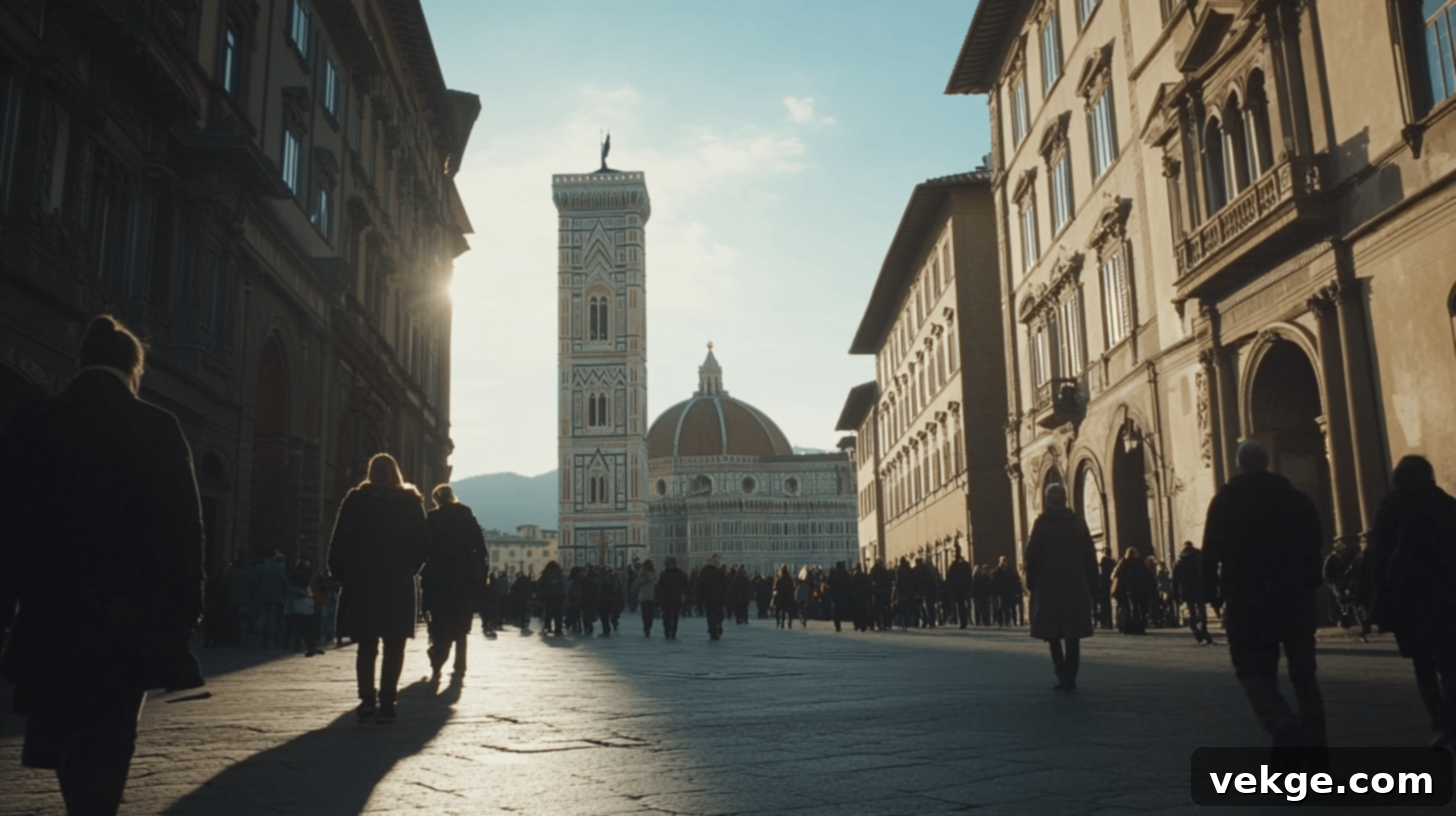
History and Importance: Piazza del Campo is Siena’s magnificent main public space, renowned worldwide for its distinctive shell shape and its rich history dating back to the 13th century. This iconic medieval square is steeply sloped, fanning out from the Palazzo Pubblico and its towering Torre del Mangia, which dominate one side. The Piazza is famous for hosting the Palio, a thrilling bareback horse race held twice yearly, which draws massive crowds and embodies fierce Sienese civic pride. Surrounded by well-preserved medieval buildings, including private palazzi, the Piazza del Campo remains the vibrant heart of Siena’s cultural and social life, a perfect place to absorb the city’s unique atmosphere and history.
Best Time to Visit: Spring (April-May) or fall (September-October) offers pleasant weather for relaxing in the square and exploring Siena, with fewer crowds than the summer peak. Mornings or evenings provide a more tranquil atmosphere and beautiful lighting for photography. Avoid Palio dates if you prefer fewer crowds.
Visiting Hours: As a public urban space, Piazza del Campo is open 24/7. Individual attractions like the Torre del Mangia and Palazzo Pubblico have their own specific opening hours, which vary by season. Always check their official websites.
30. Mount Etna (Sicily)
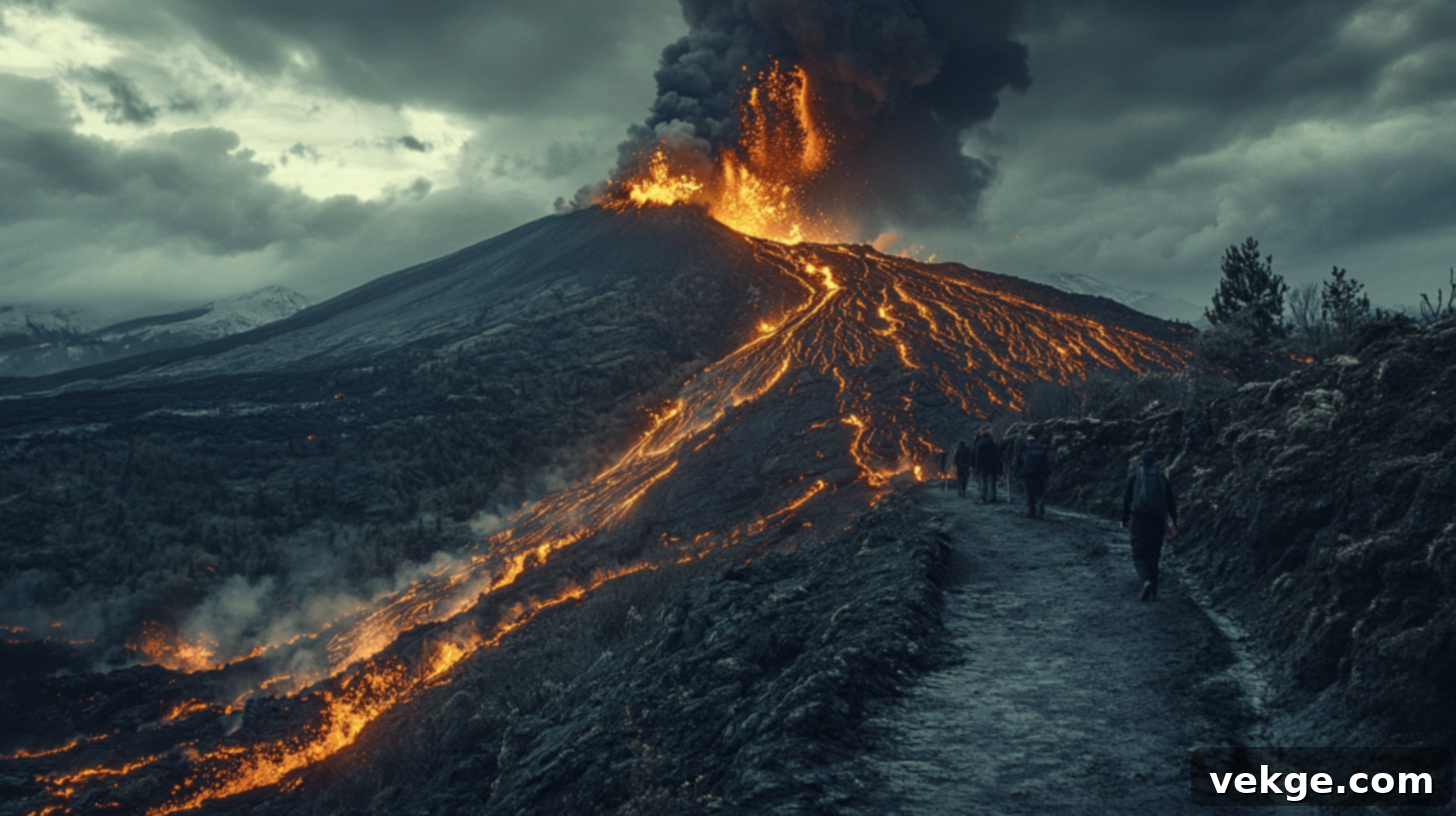
History and Importance: Mount Etna, situated on the eastern coast of Sicily, is not only Europe’s highest and most active stratovolcano, rising approximately 3,329 meters (10,922 feet), but also one of the most active volcanoes in the world, with eruptions documented for over 500,000 years. This natural wonder is a UNESCO World Heritage site, recognized for its exceptional geological activity and significant impact on volcanology. Despite its powerful eruptions, the fertile volcanic soil on its lower slopes supports extensive agriculture, including vineyards, olive groves, and fruit orchards. Etna offers a unique and dramatic landscape, popular for hiking, skiing in winter, and captivating cable car rides that provide unparalleled views of its craters and the surrounding Sicilian panorama.
Best Time to Visit: Spring (April-June) and fall (September-November) offer cool, clear weather, which is ideal for hiking and exploring the volcano’s upper reaches. Summer can be very hot, while winter is popular for skiing but may have limited access to the summit. Always check weather and volcanic activity forecasts before planning your trip.
Visiting Hours: Mount Etna is accessible year-round, though access to the summit area is highly dependent on weather and volcanic conditions. Guided tours usually operate from 8:00 AM to 5:00 PM, with cable cars and jeep excursions adhering to seasonal schedules. Always book guided tours for safety and compliance with regulations.
31. Castel del Monte (Puglia)
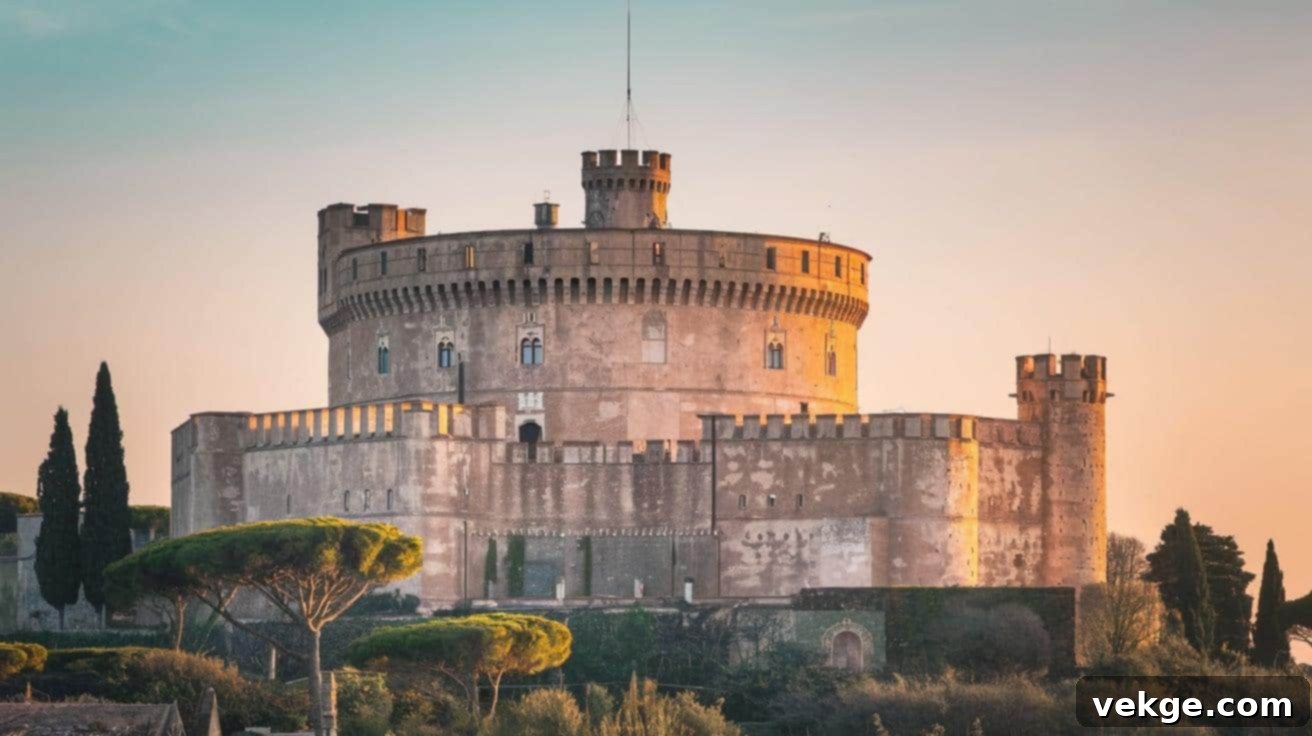
History and Importance: Castel del Monte, a striking 13th-century fortress located in the Puglia region, is unlike any other castle in Italy. Commissioned by the Holy Roman Emperor Frederick II, a brilliant and enigmatic ruler, its most distinctive feature is its perfect octagonal plan, with an octagonal tower at each of its eight corners. This unique design, combining elements of classical antiquity, Islamic architecture, and Cistercian Gothic, has led to much speculation about its purpose—whether a hunting lodge, a defensive fortress, or a symbolic temple. Now a UNESCO World Heritage site, Castel del Monte continues to fascinate visitors with its mysterious geometric precision, masterful stonework, and the intriguing intellectual legacy of its builder, making it a profound architectural enigma.
Best Time to Visit: Spring (April-May) or fall (September-October) provides comfortable temperatures for exploring the castle and its surroundings, with typically fewer tourists. Early mornings or late afternoons can offer a more tranquil visiting experience and excellent light for photography.
Visiting Hours: Open daily from 9:00 AM to 7:00 PM (closing earlier in winter). Last entry is usually 45 minutes before closing. Always check the official museum website for current opening times, especially around public holidays.
Wrapping Up: Planning Your Unforgettable Italian Journey
Embarking on a journey to discover Italy’s iconic landmarks offers far more than just sightseeing; it provides a profound and tangible connection with centuries of history, art, and culture that books and photographs can only begin to hint at. From the ancient grandeur of Rome to the artistic heart of Florence, the romantic canals of Venice, and the unique regional treasures scattered across the peninsula, each destination promises a memorable experience.
This comprehensive guide has been designed to help you plan your Italian adventure with utmost confidence, providing valuable insights into what makes each place special, the optimal times for your visit, and essential practical details like visiting hours. Remember that the shoulder seasons of spring (April to May) and fall (September to October) generally offer the perfect balance of pleasant weather and more manageable crowd levels across most sites. Additionally, aiming for early morning or late afternoon visits will consistently help you avoid the busiest tourist rushes and enjoy a more intimate experience with these magnificent treasures.
As you meticulously plan your trip, keep this guide handy. It will empower you to craft an itinerary that not only aligns perfectly with your interests but also allows you to delve deep into Italy’s greatest historical and artistic wonders. Whether you dream of standing where gladiators once fought, marveling at Renaissance masterpieces, or exploring ancient cave dwellings, Italy promises an experience that will enrich your soul and ignite your imagination.
So, which of these incredible Italian landmarks will be the first to grace your travel itinerary? Begin dreaming, start planning, and prepare to create memories that will last a lifetime in one of the world’s most captivating countries.
For more such interesting and helpful blogs on travel and culture, do visit our website.
